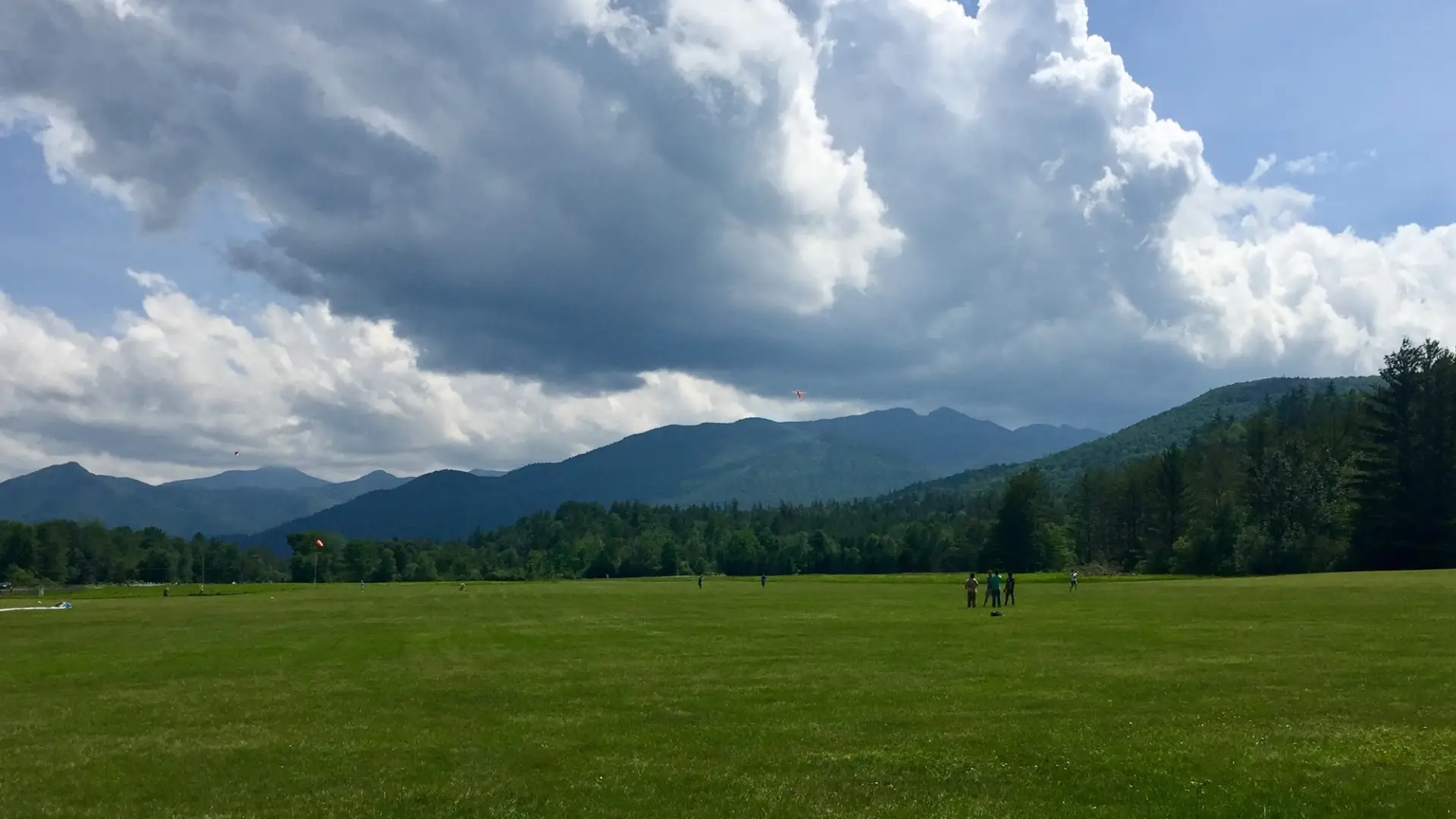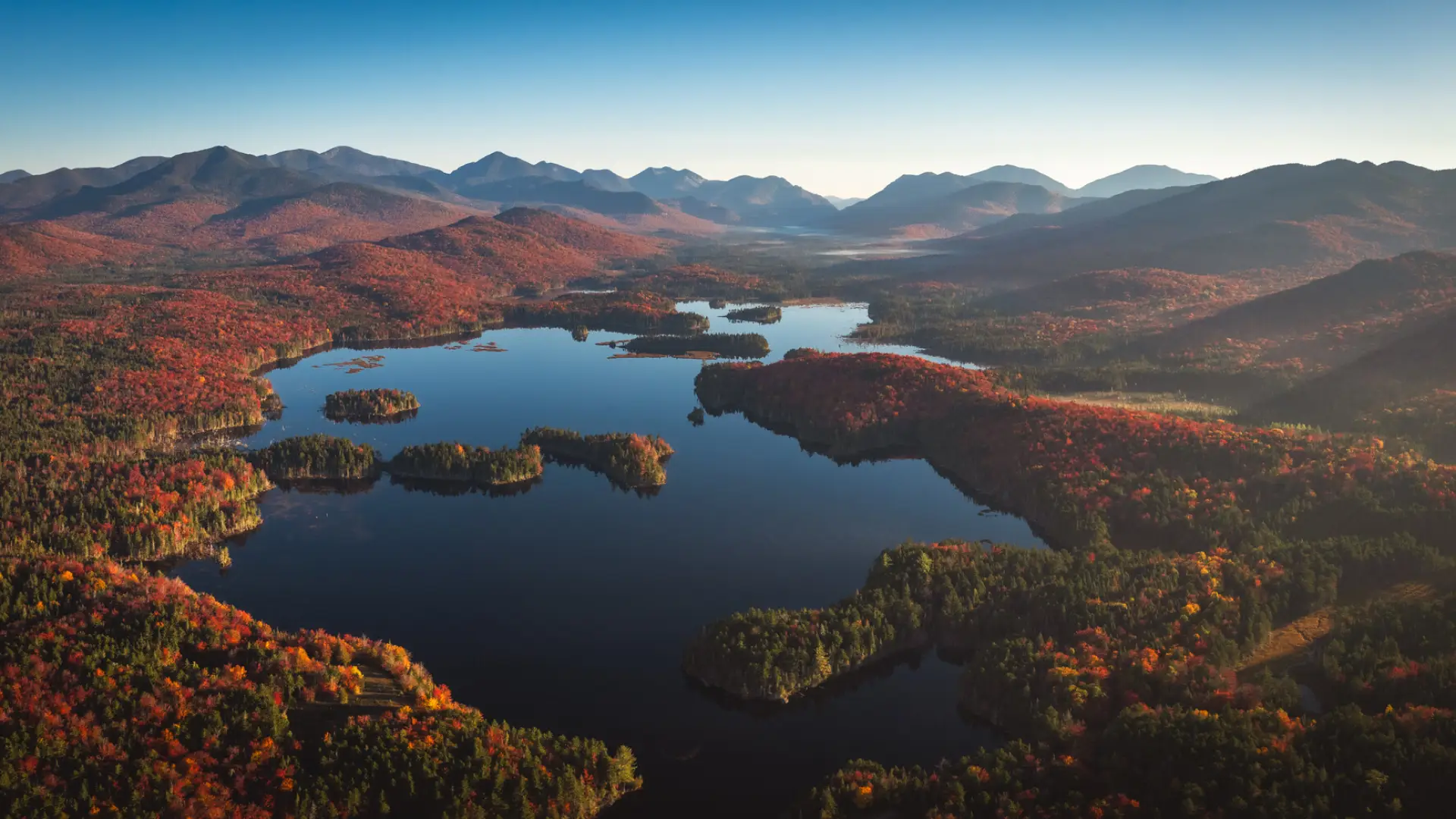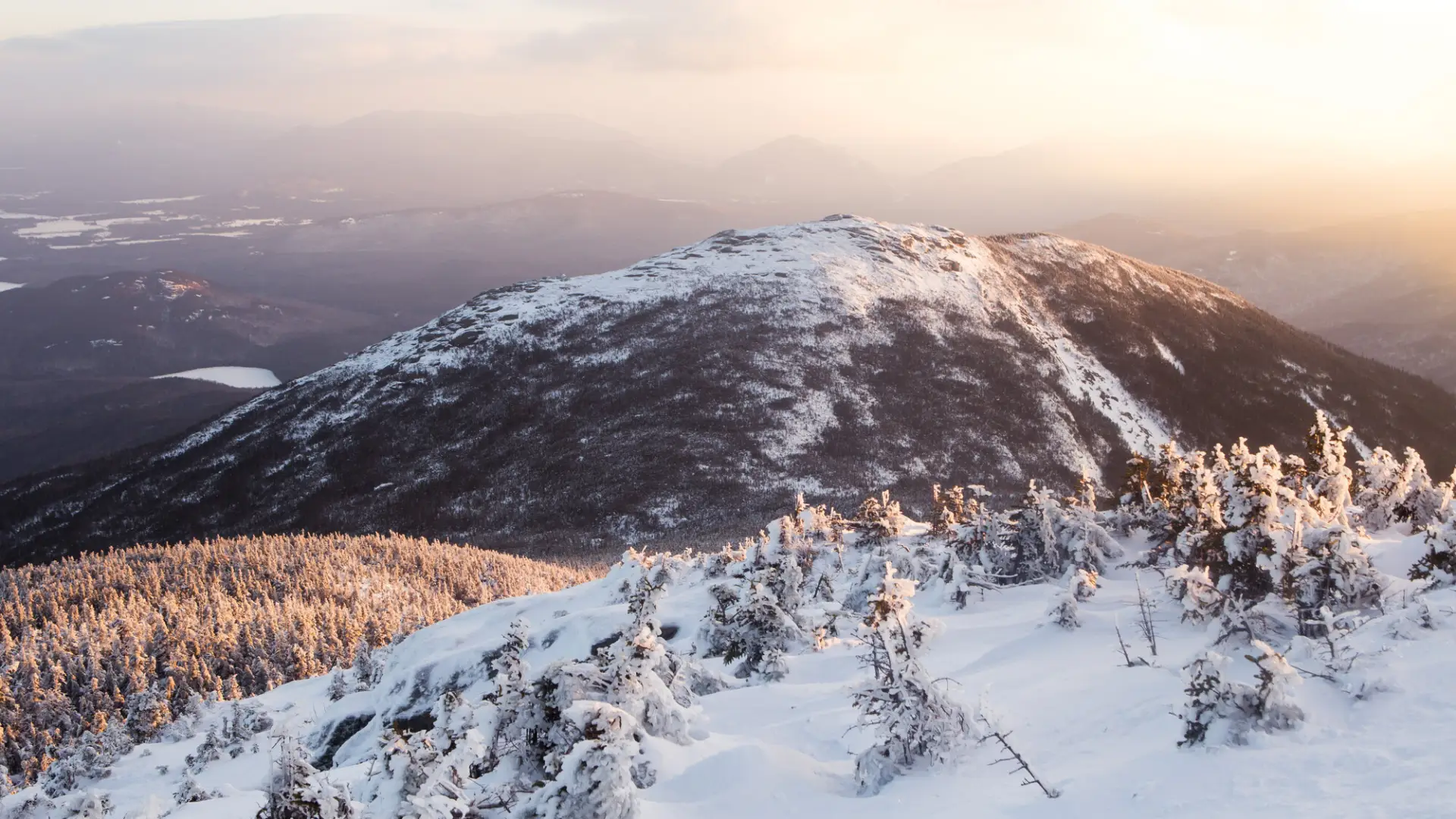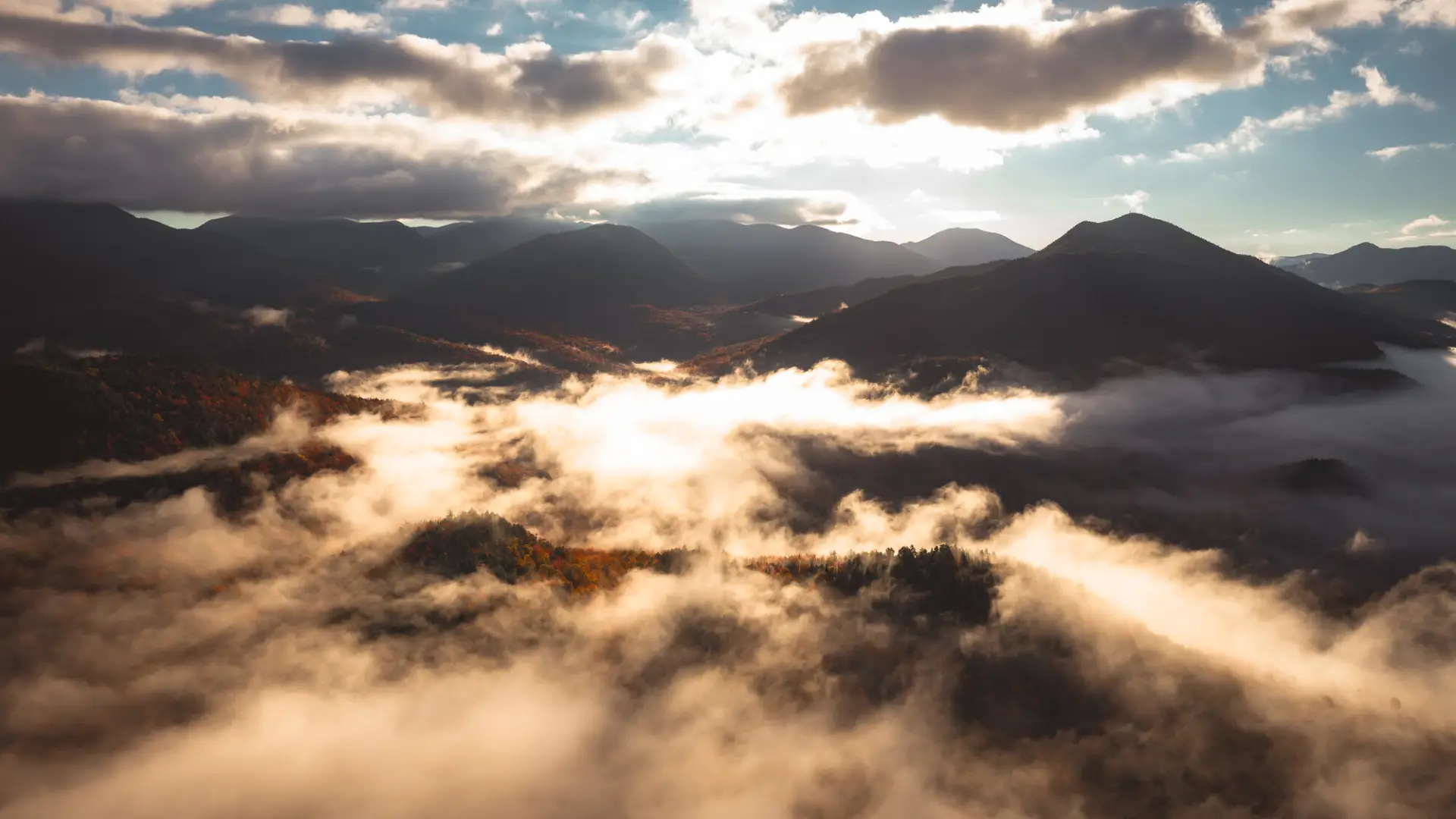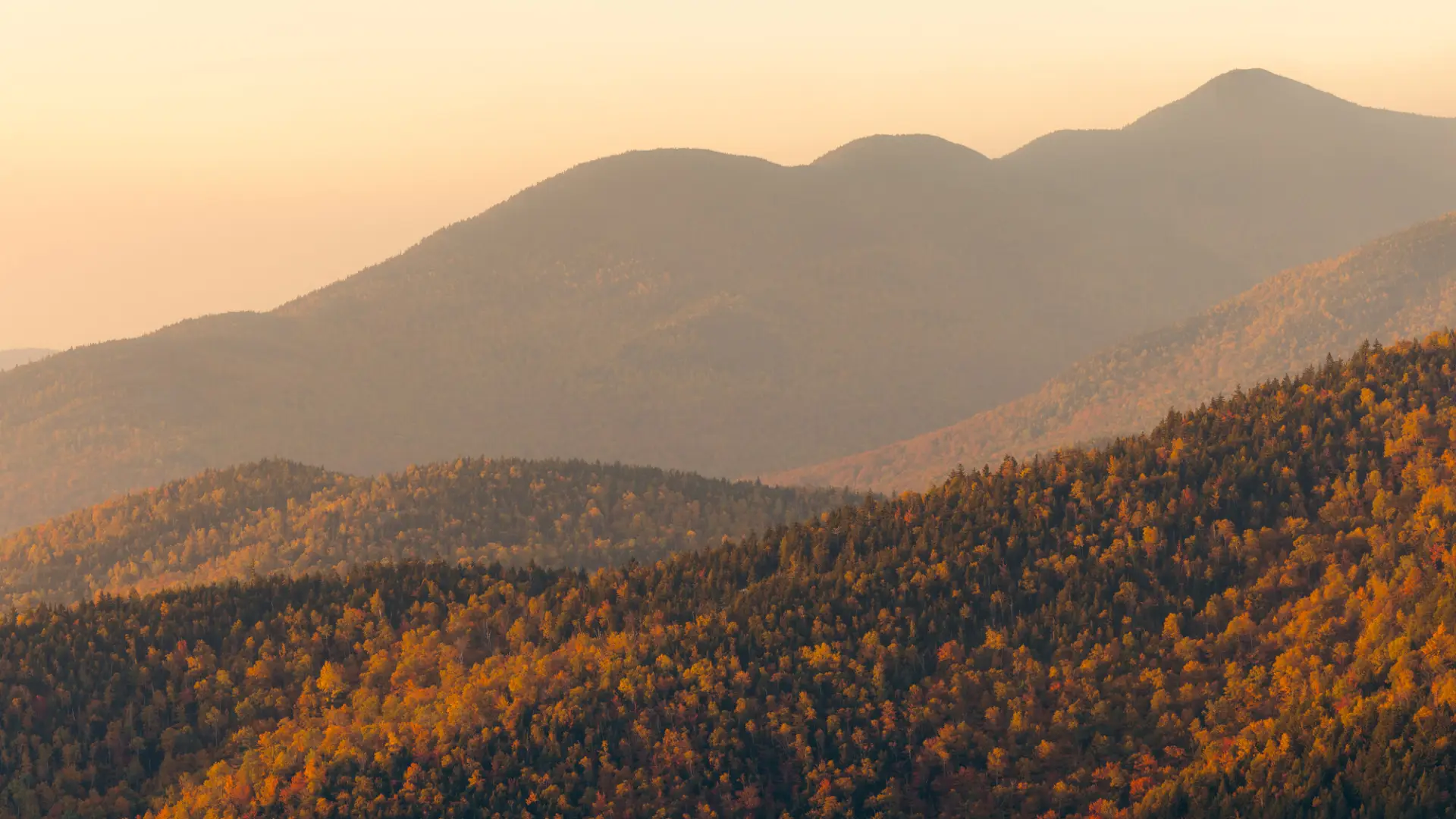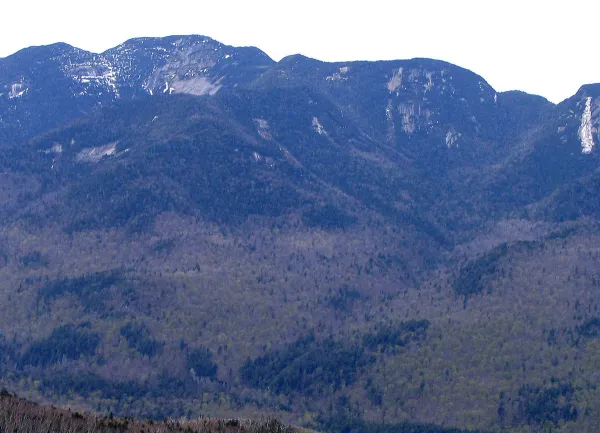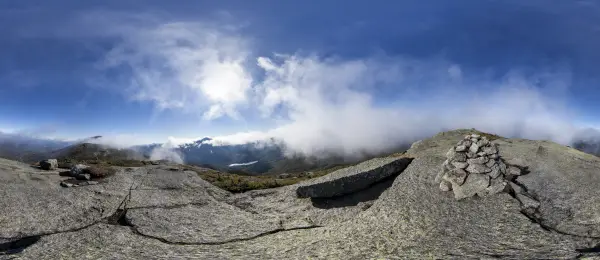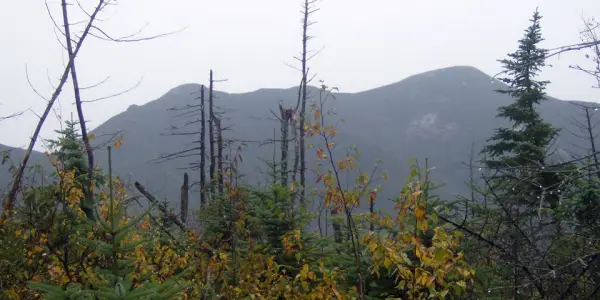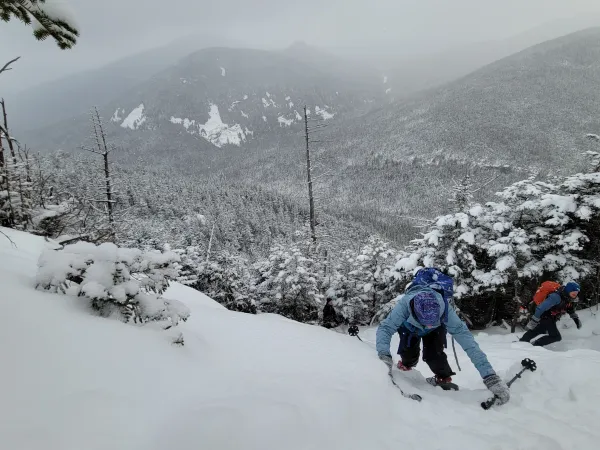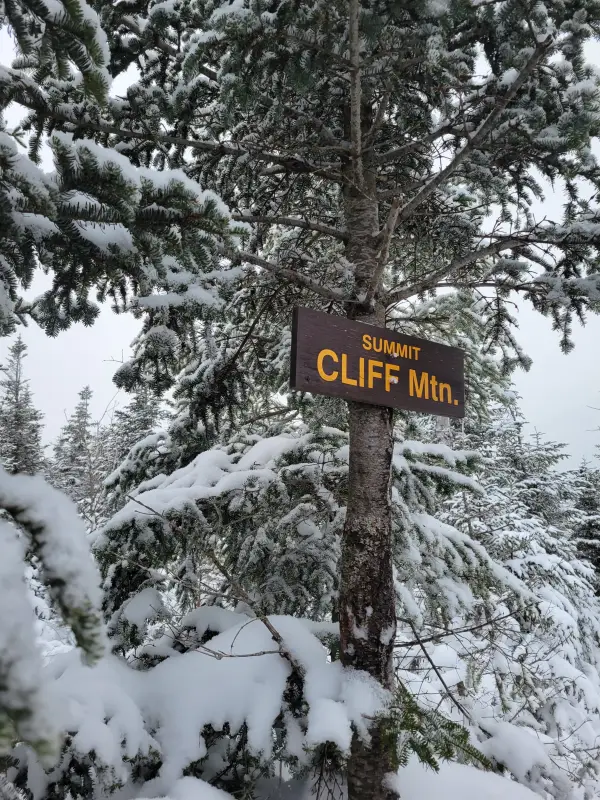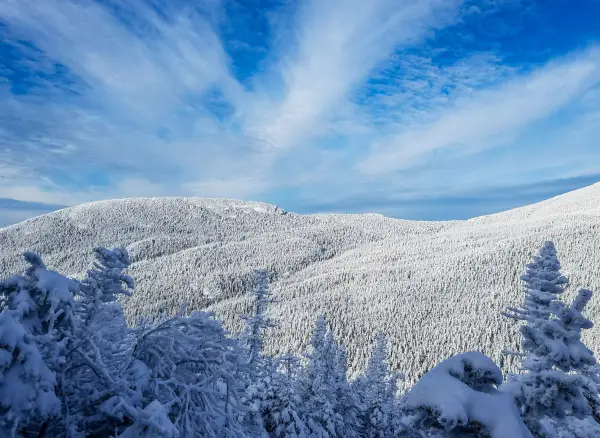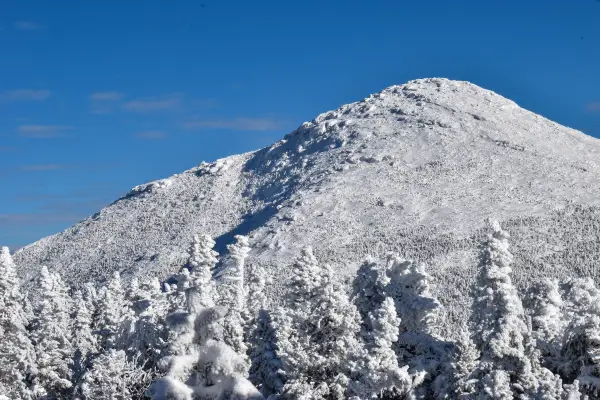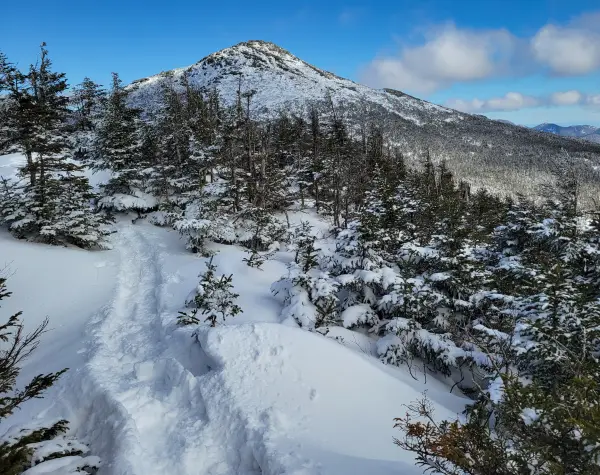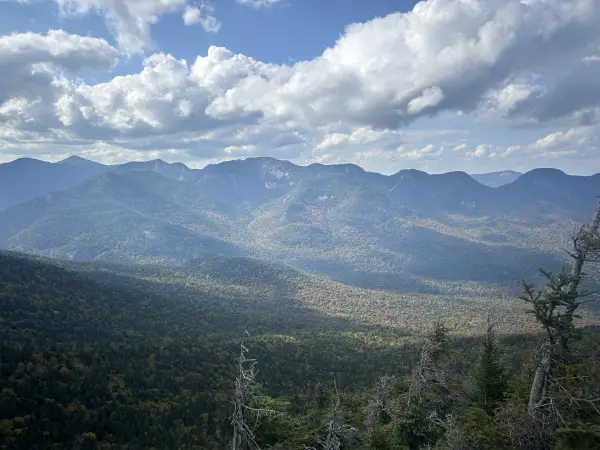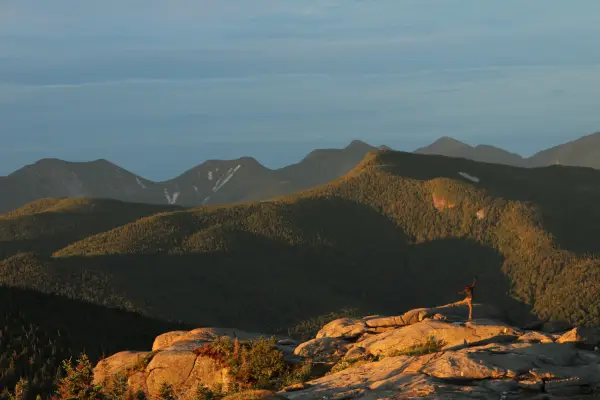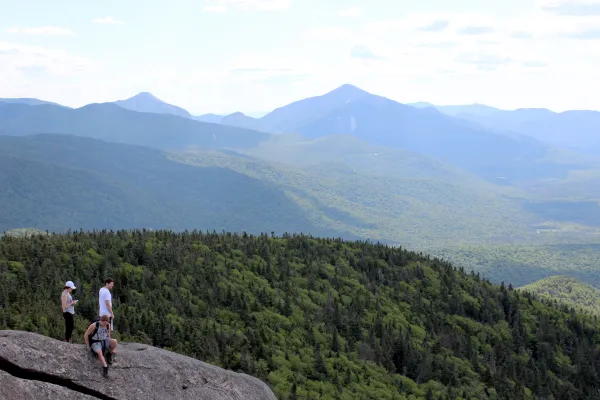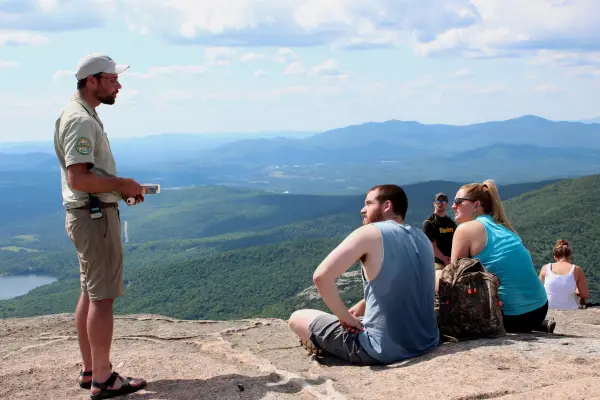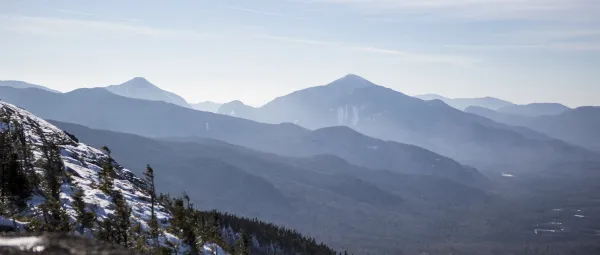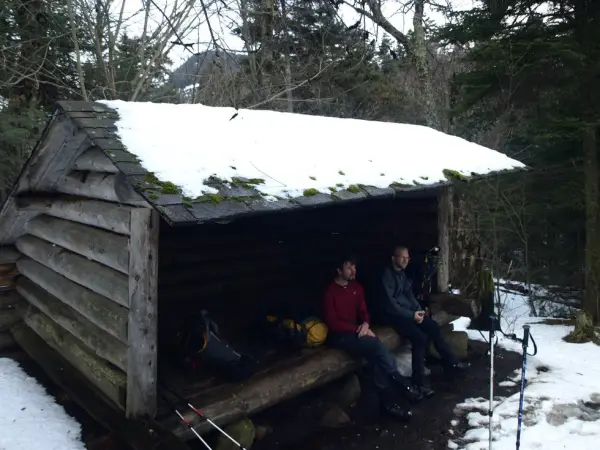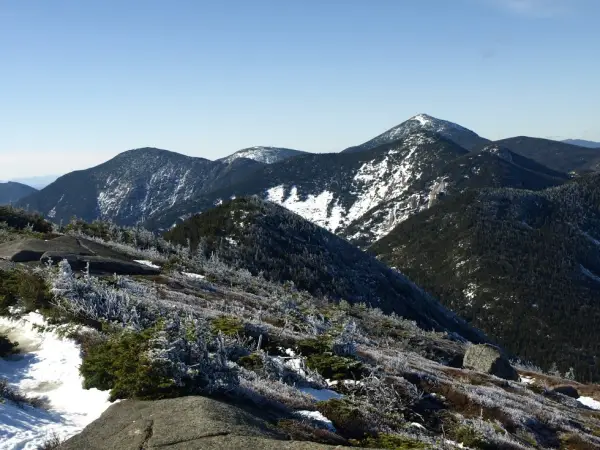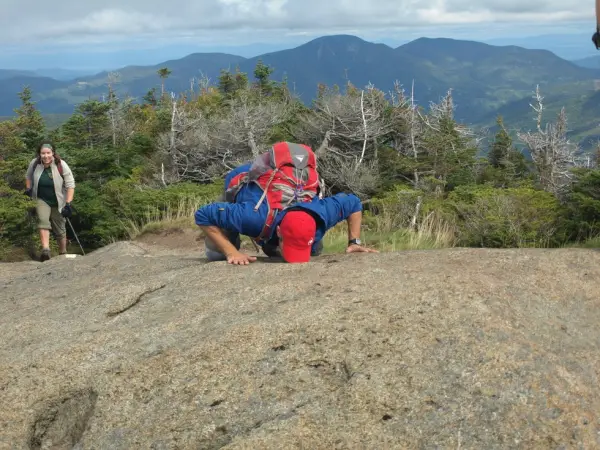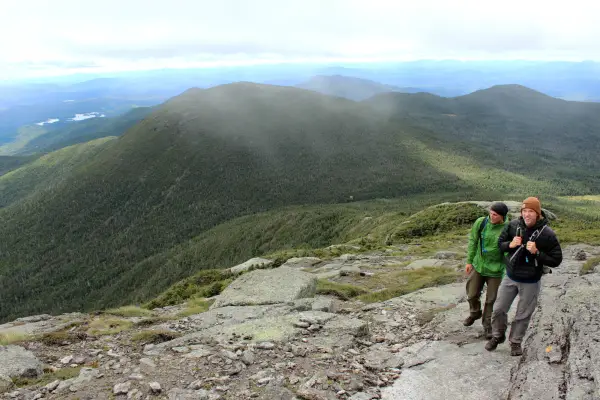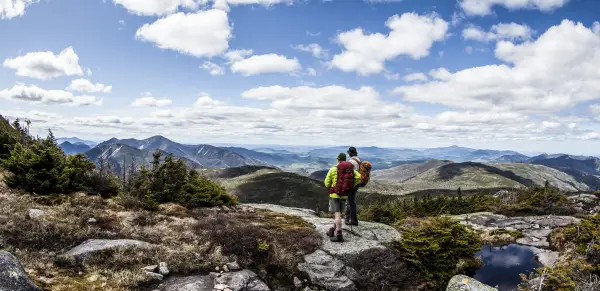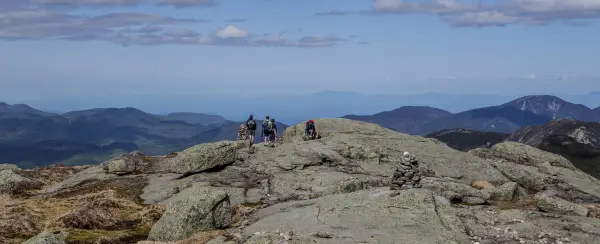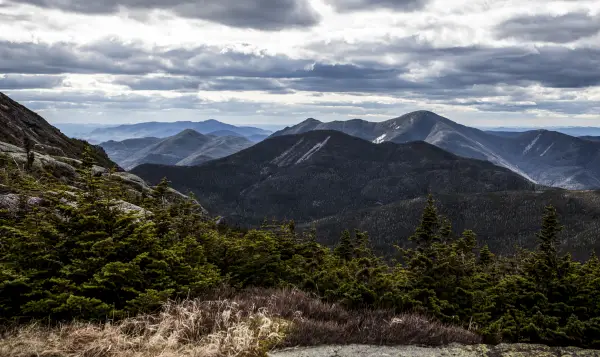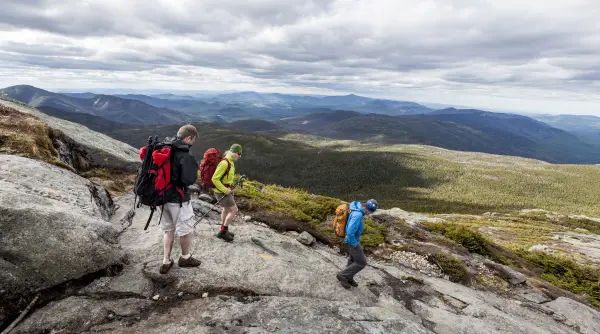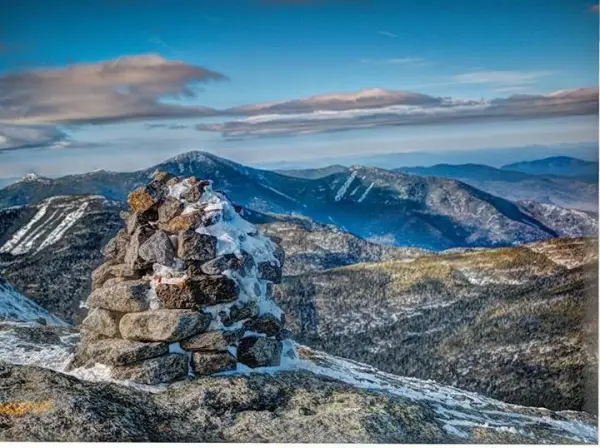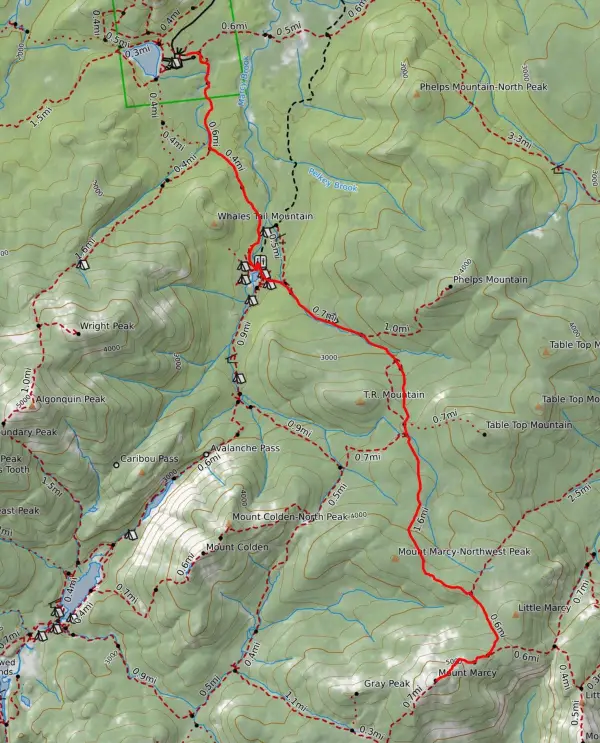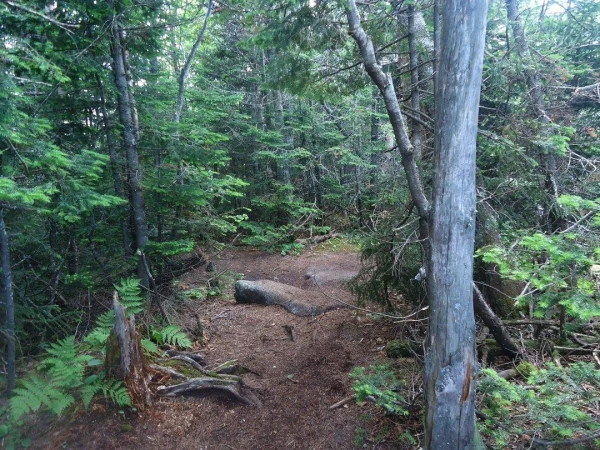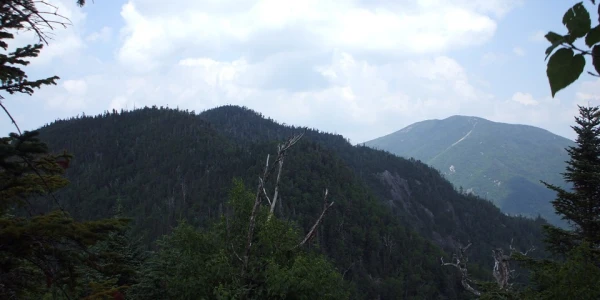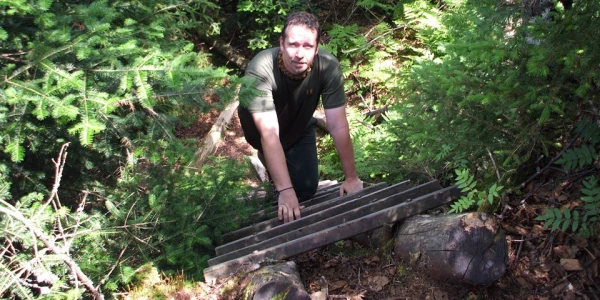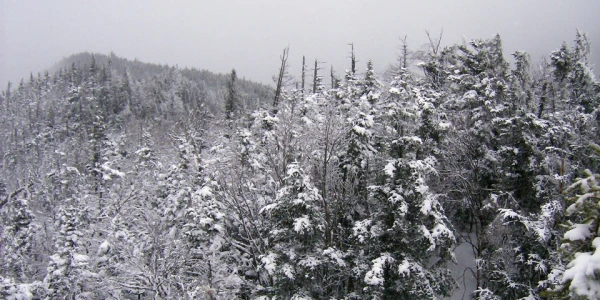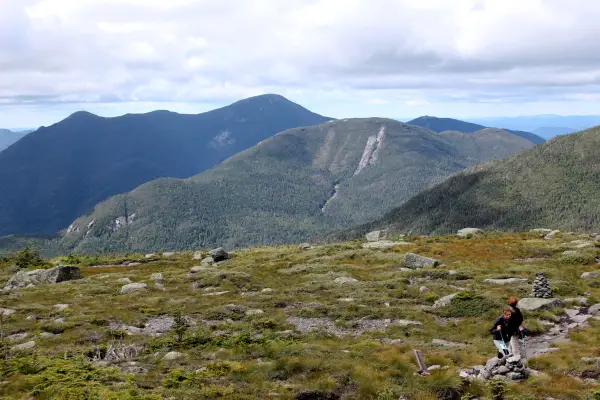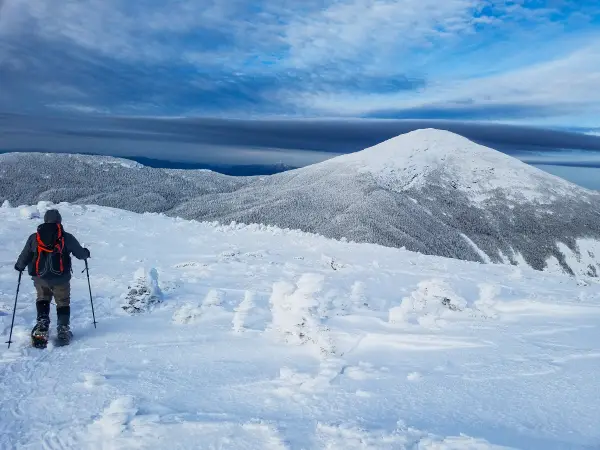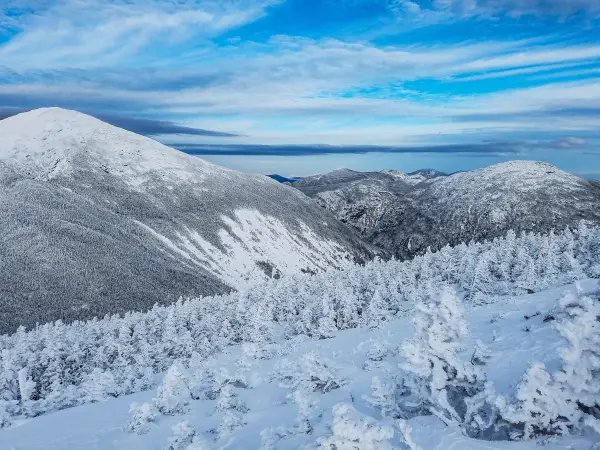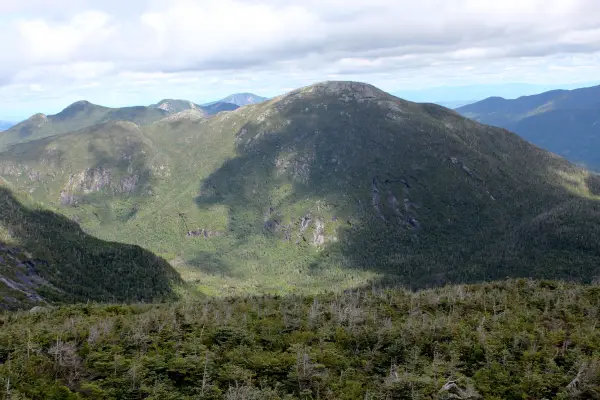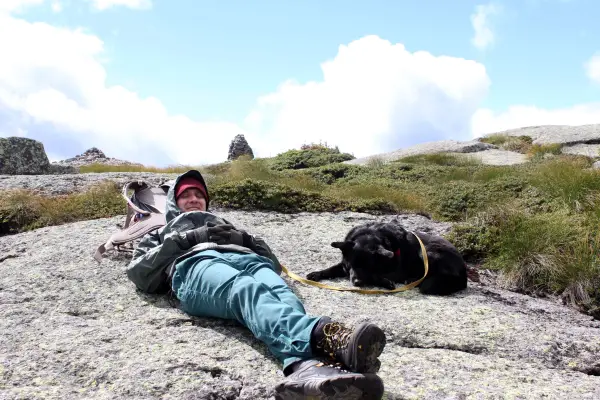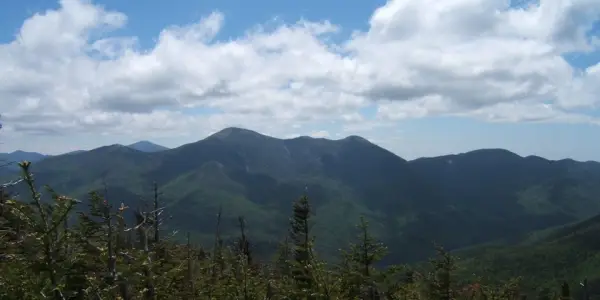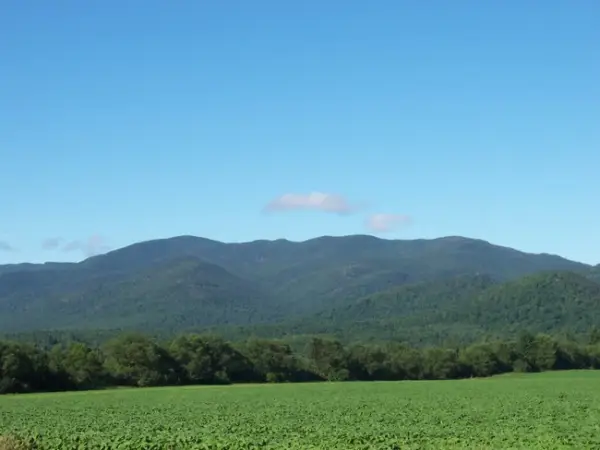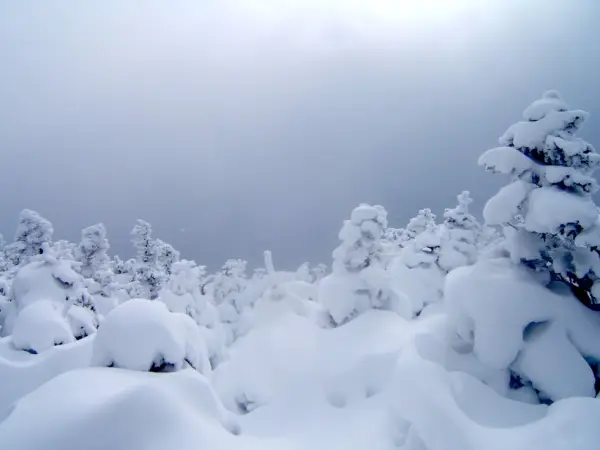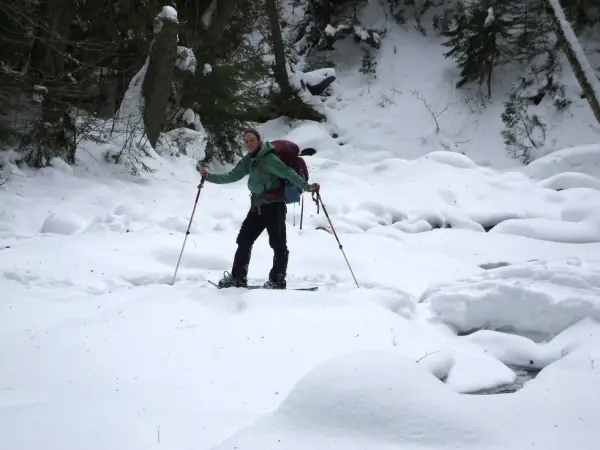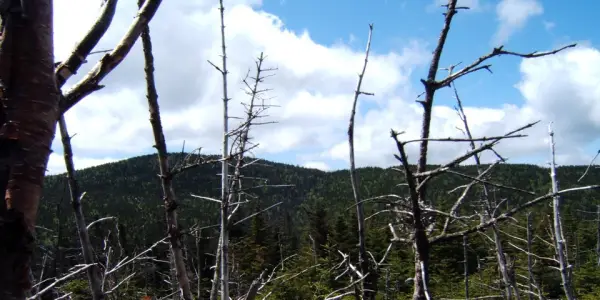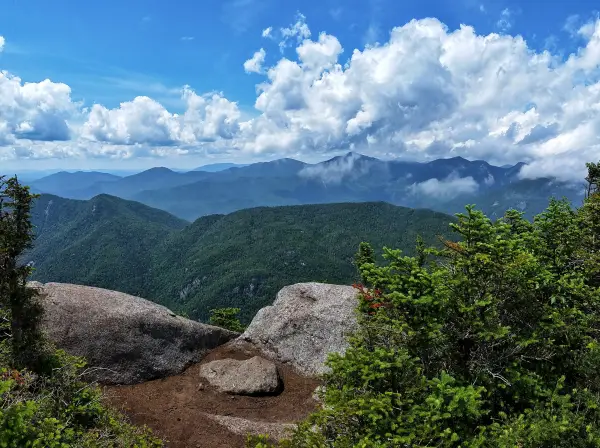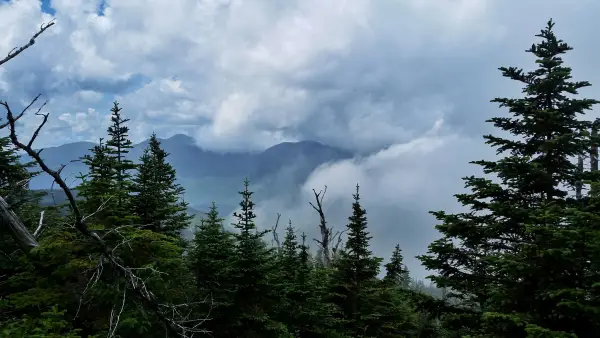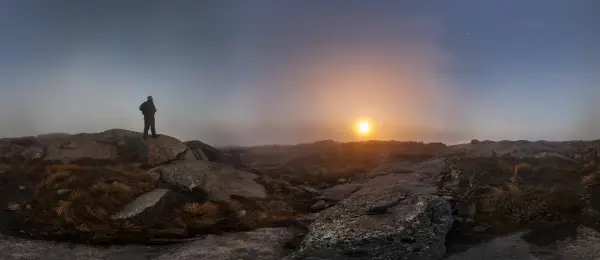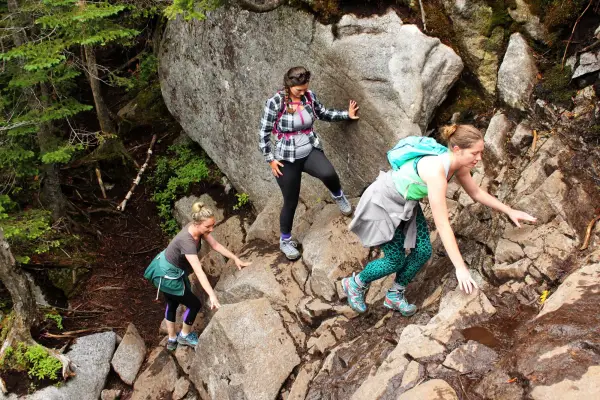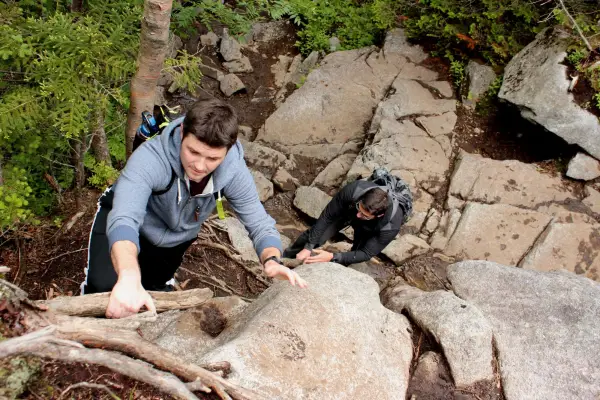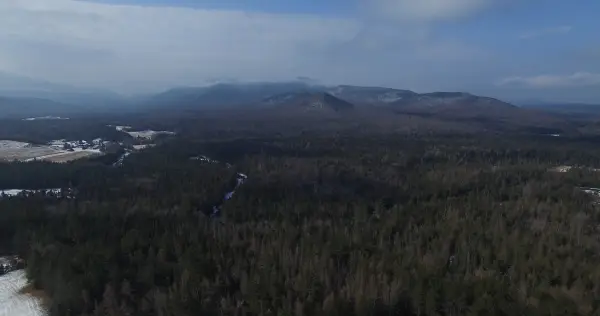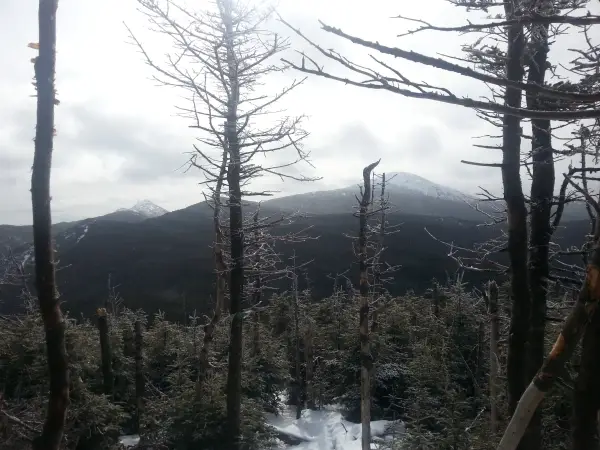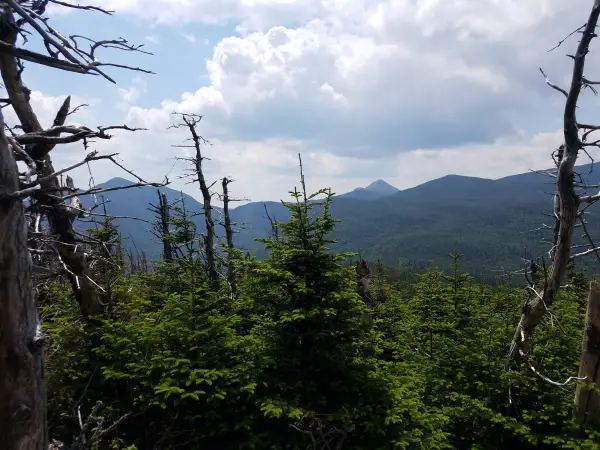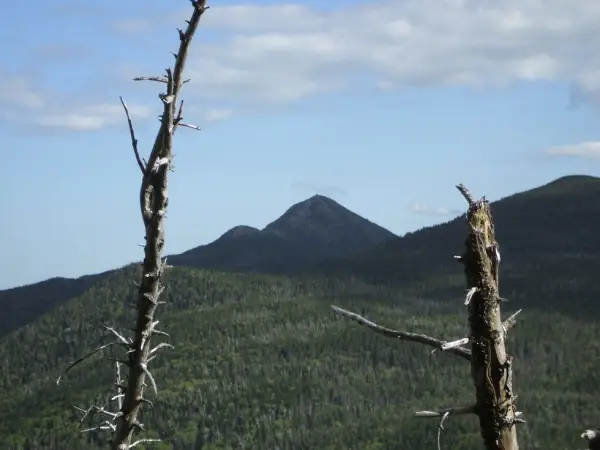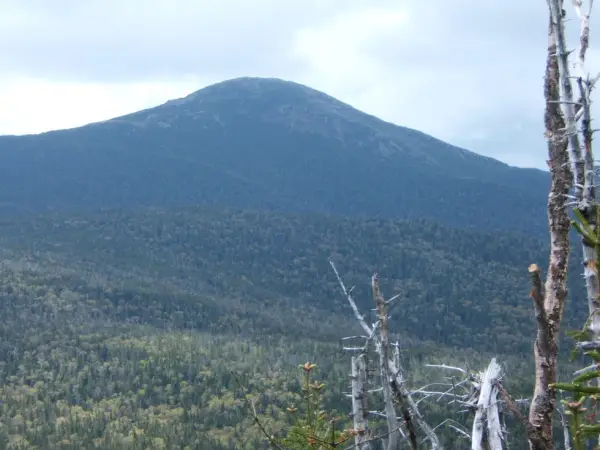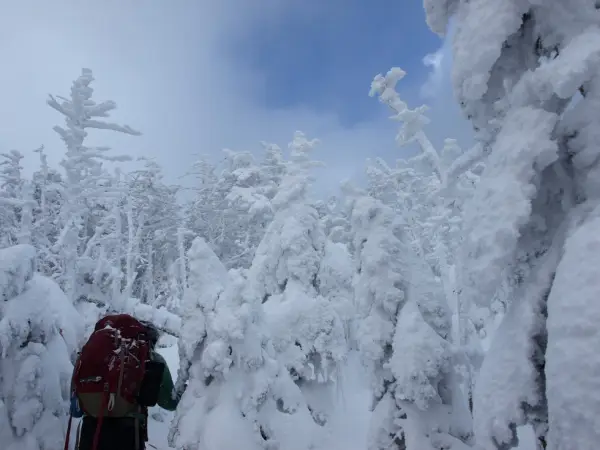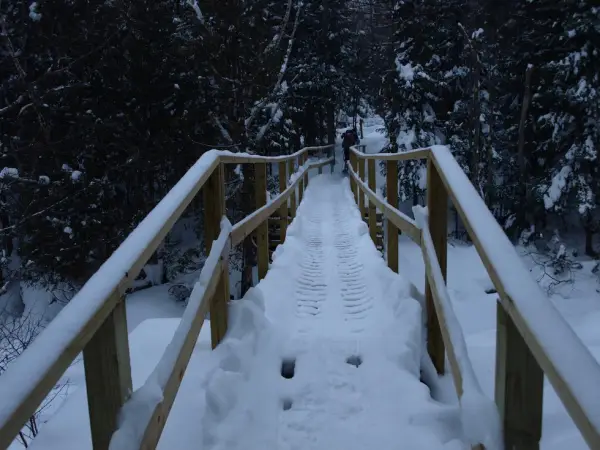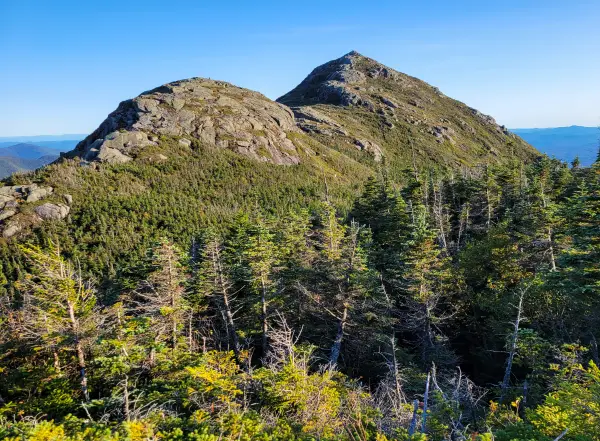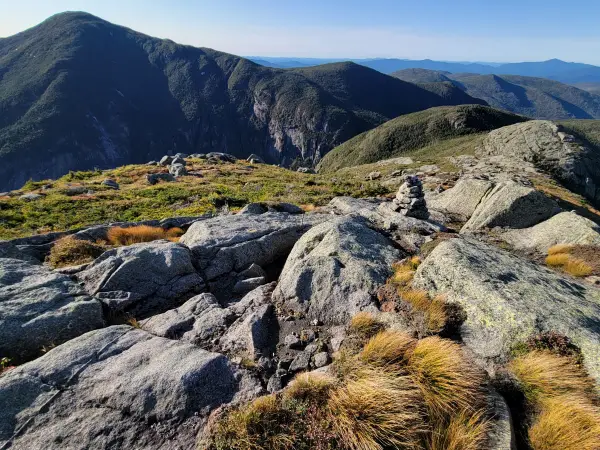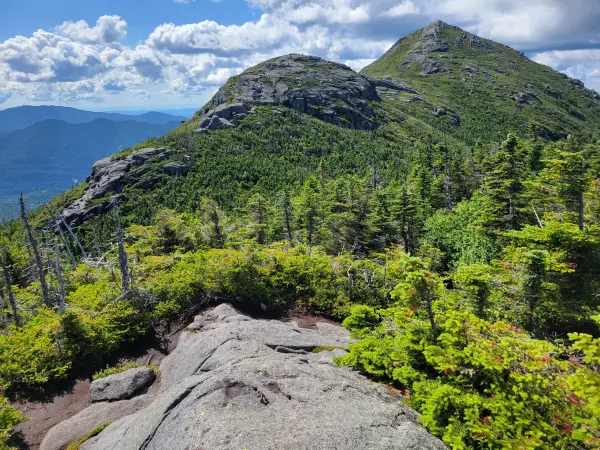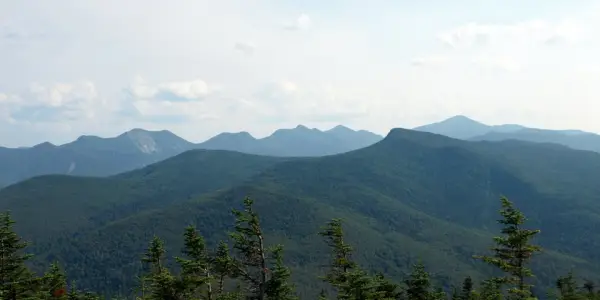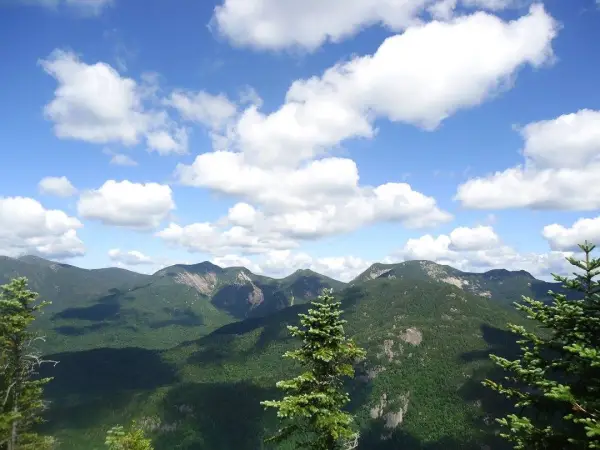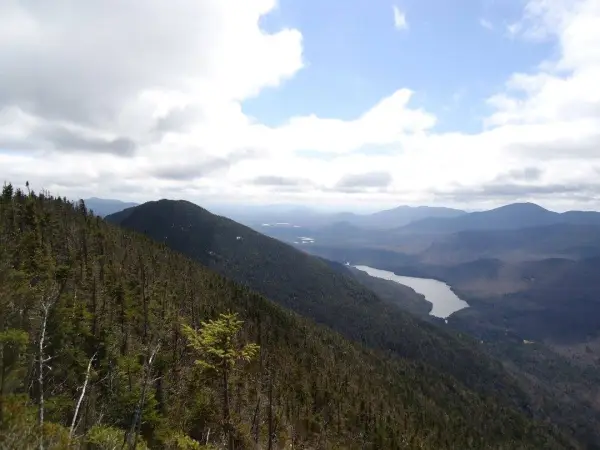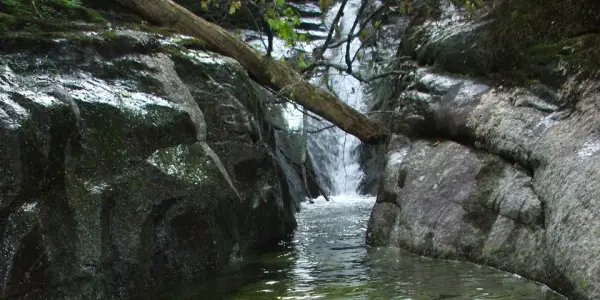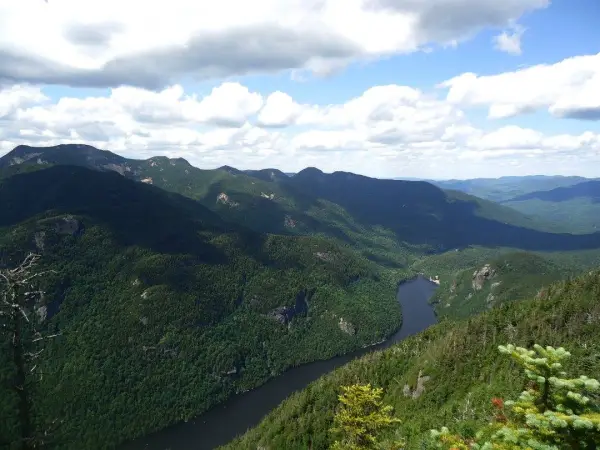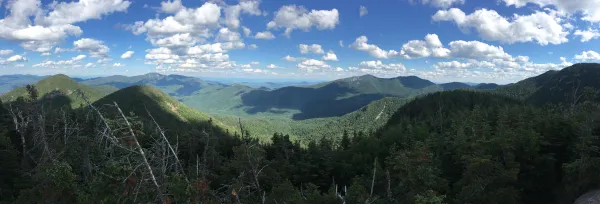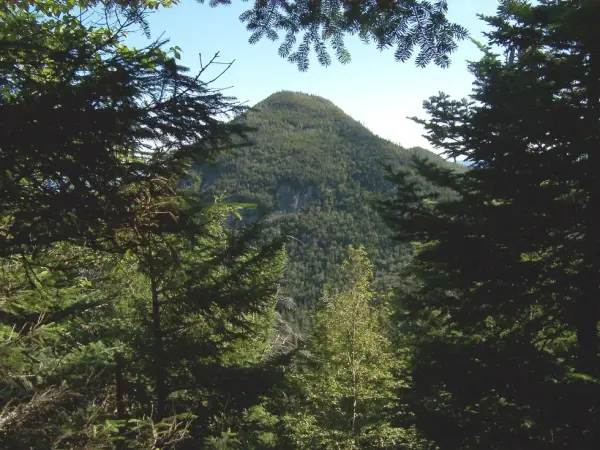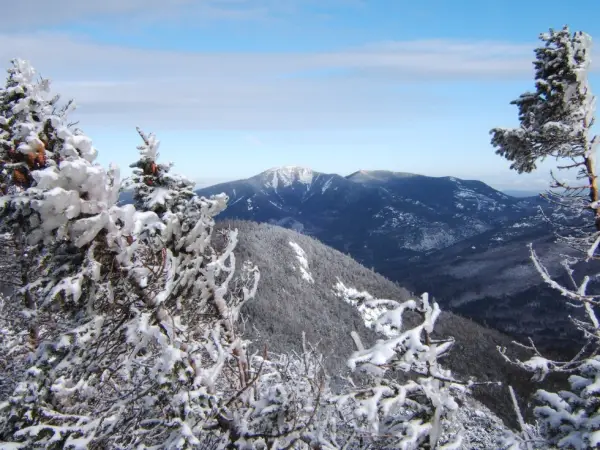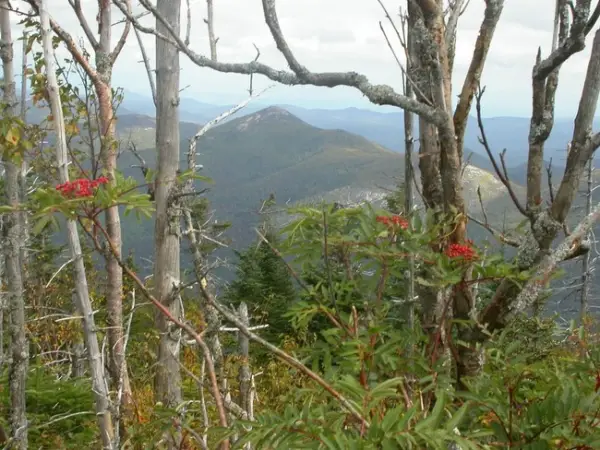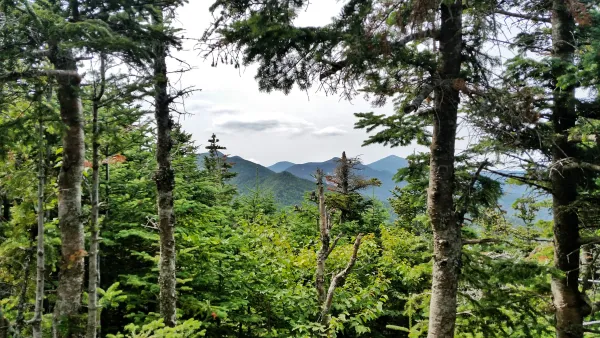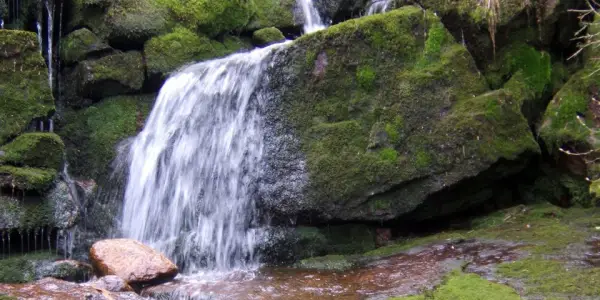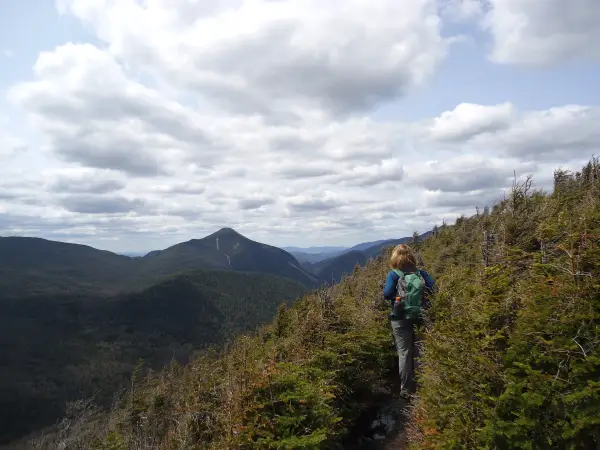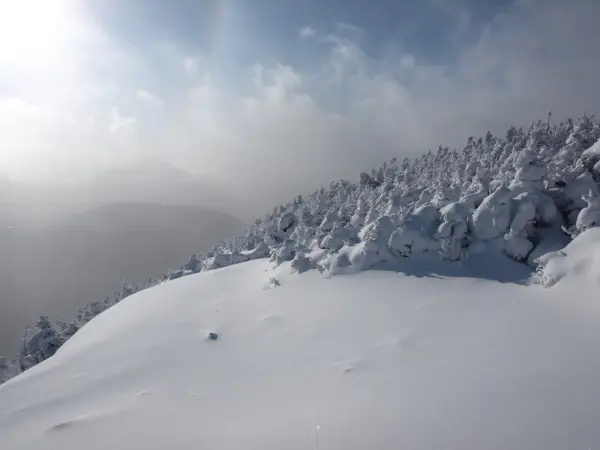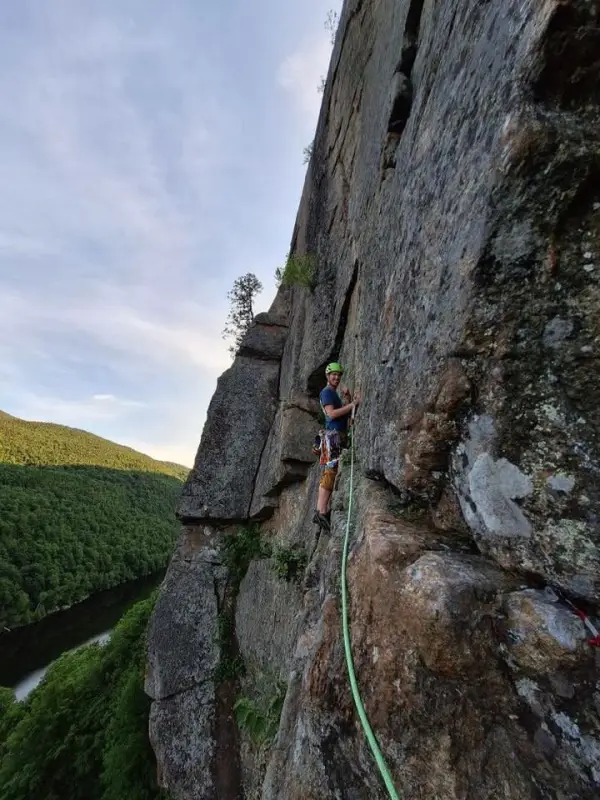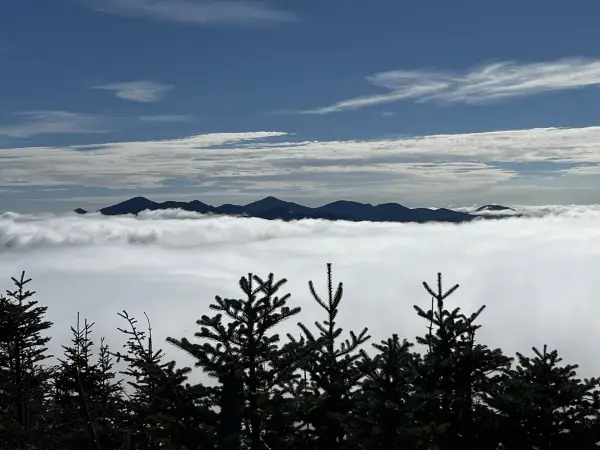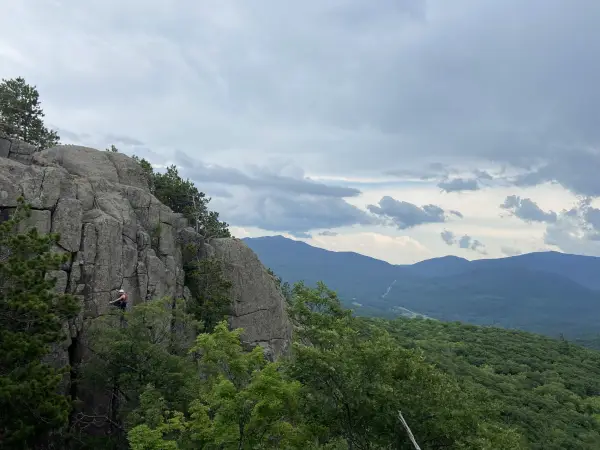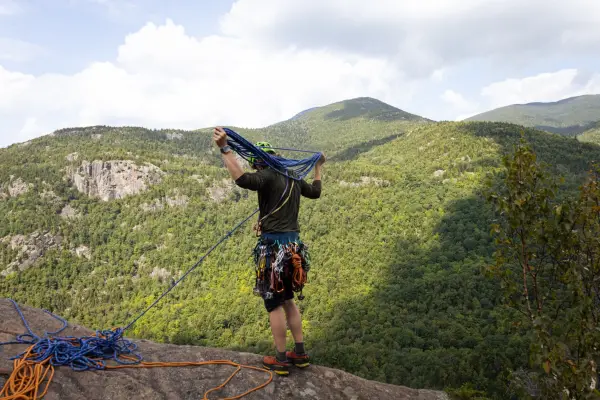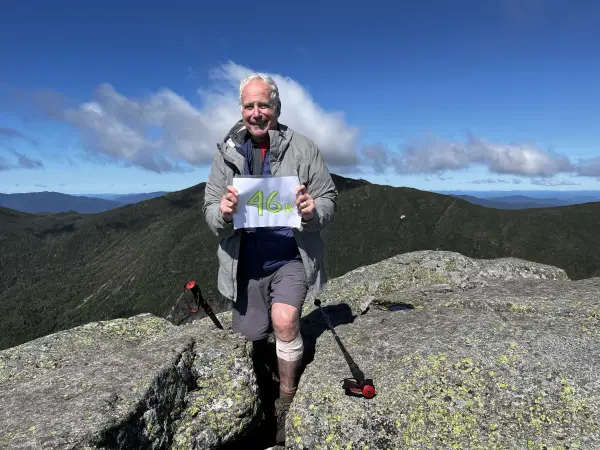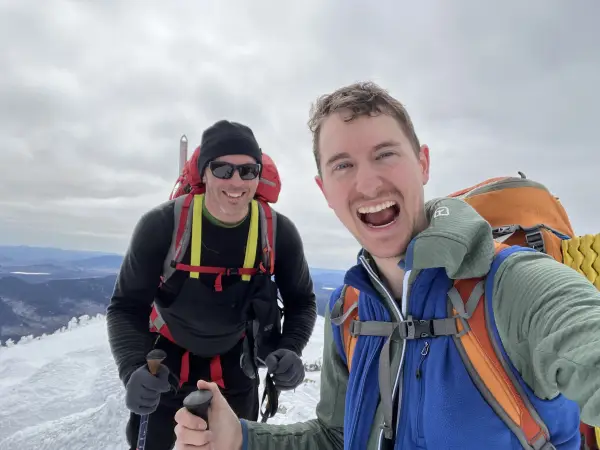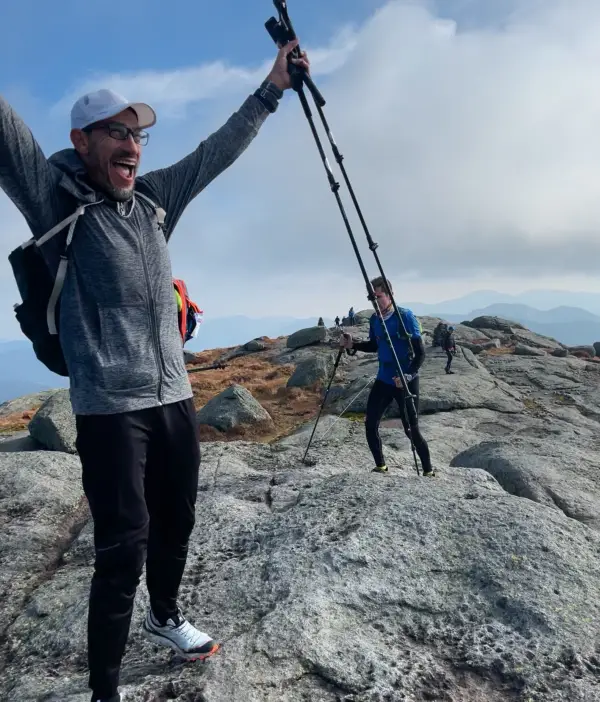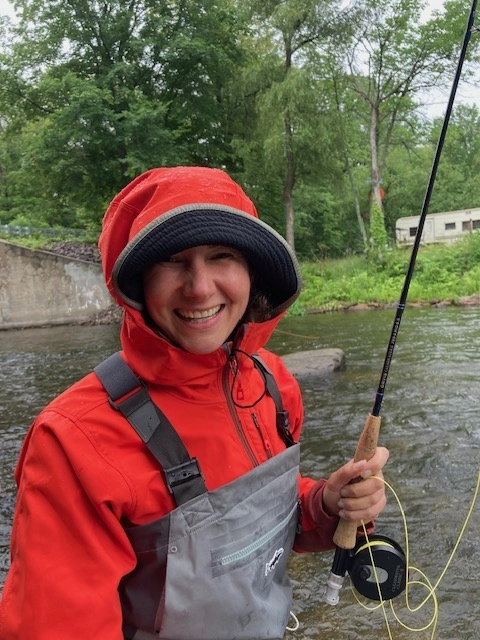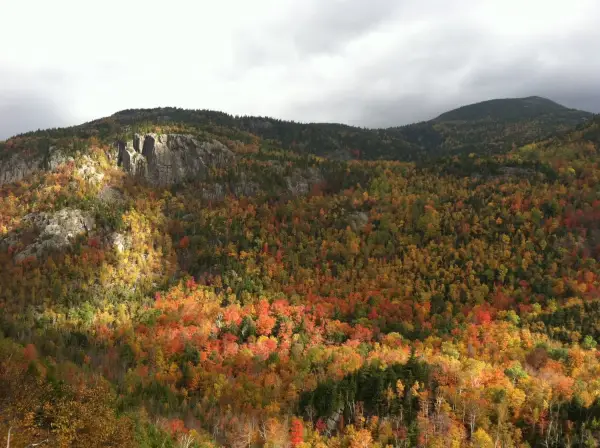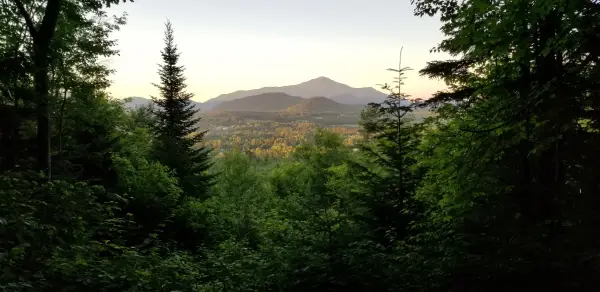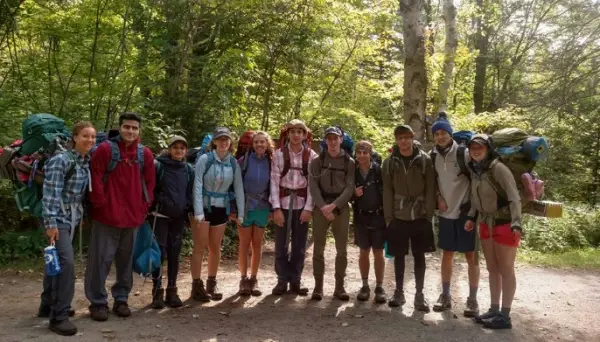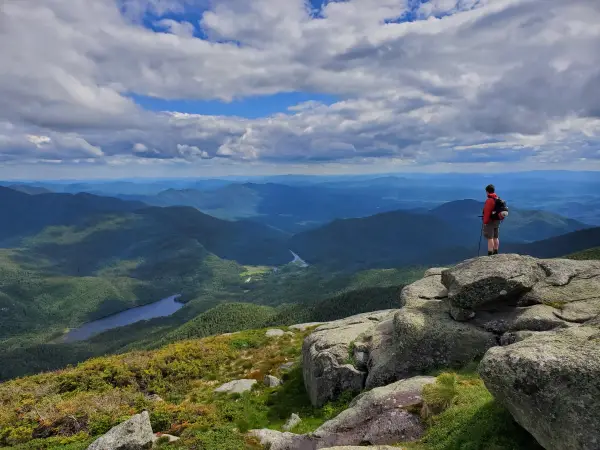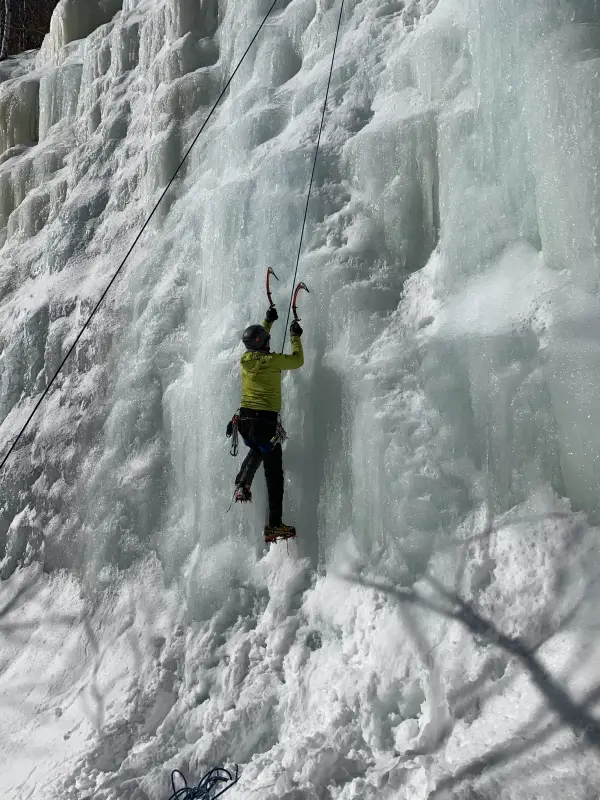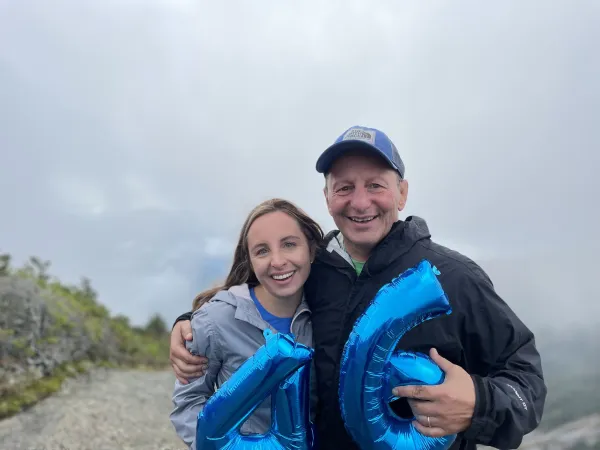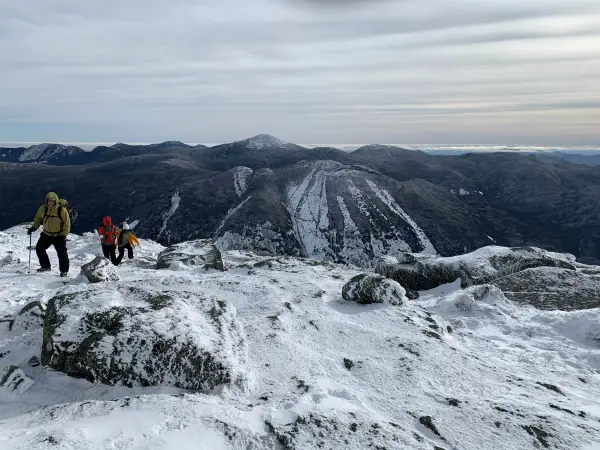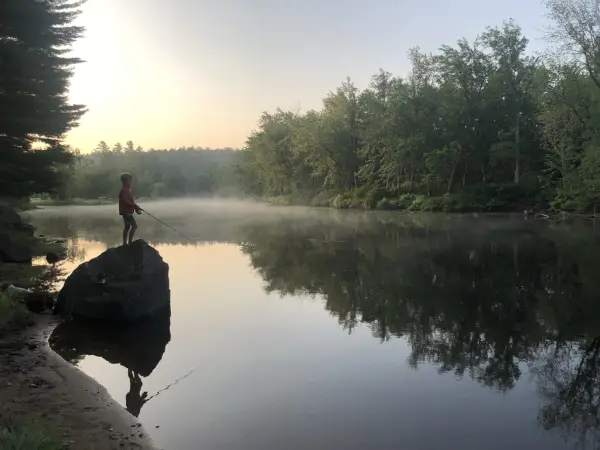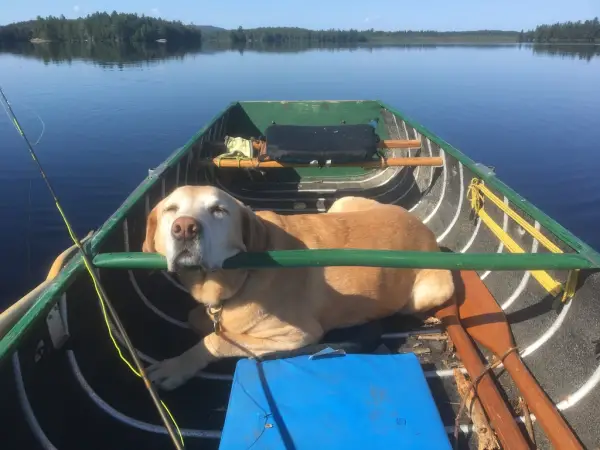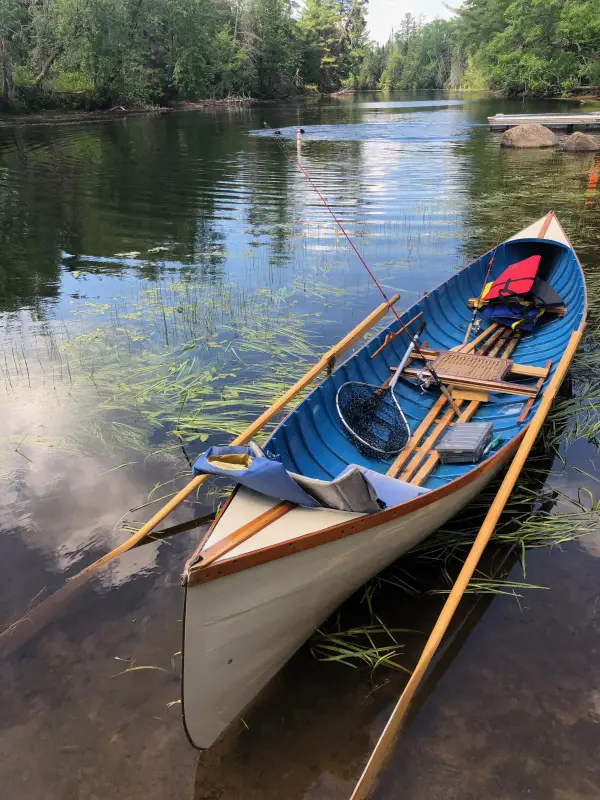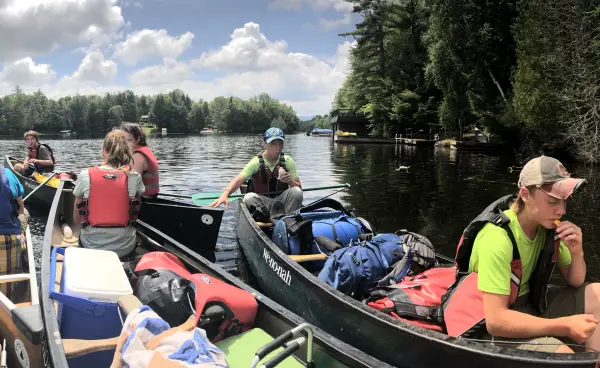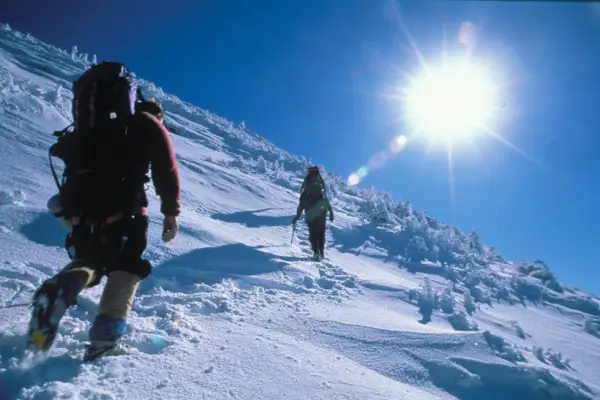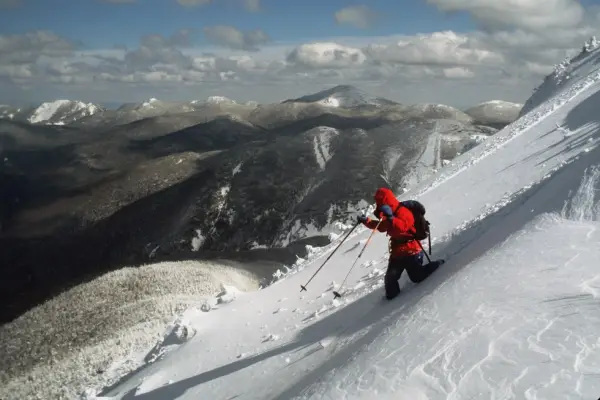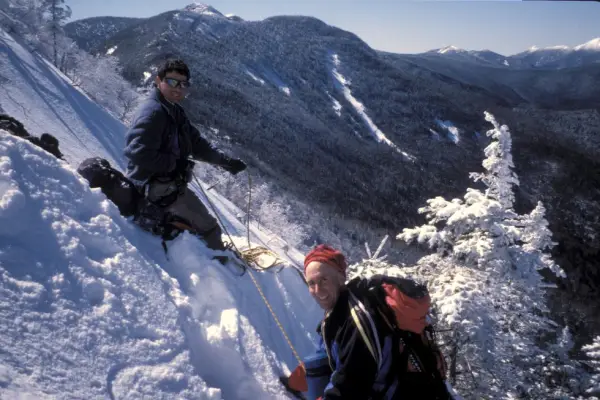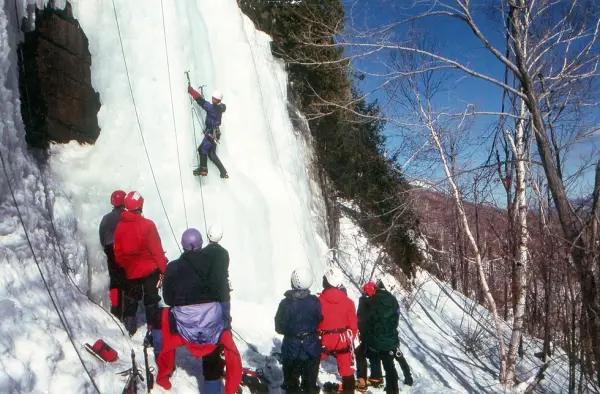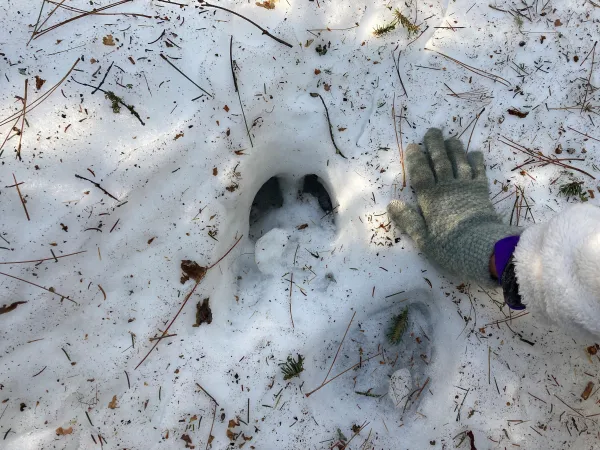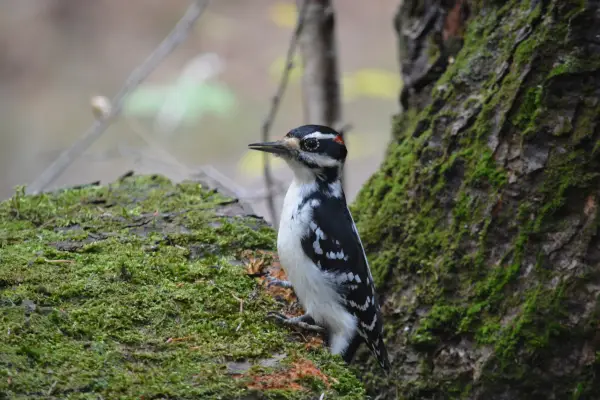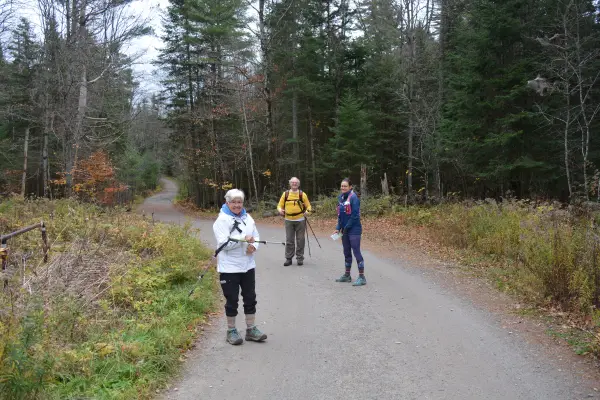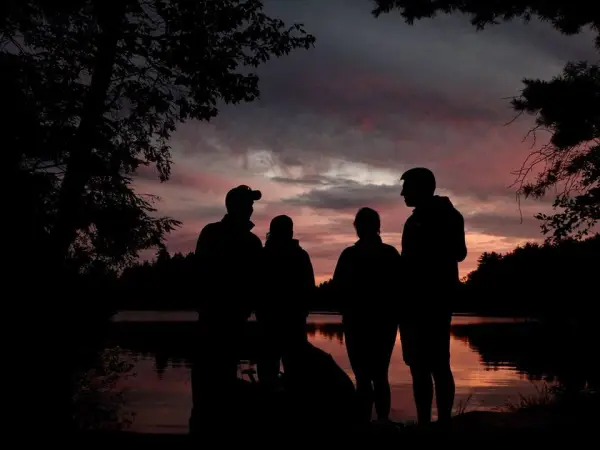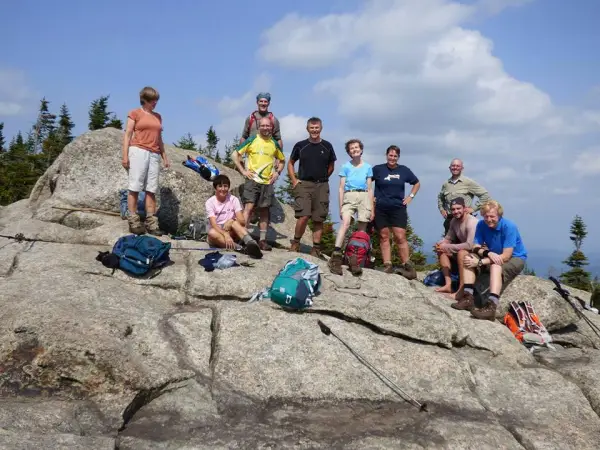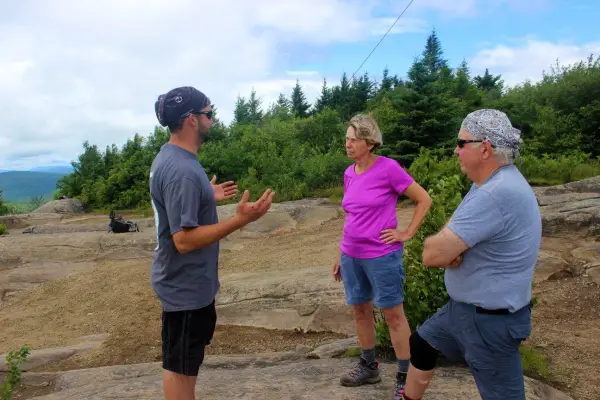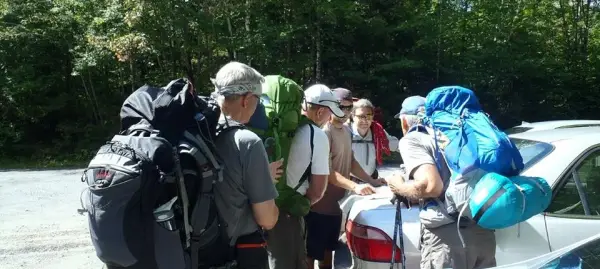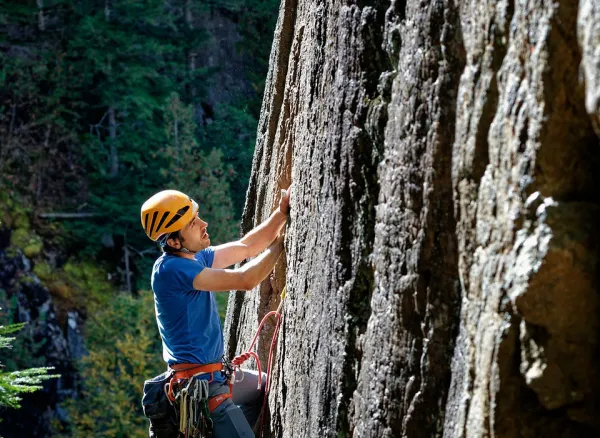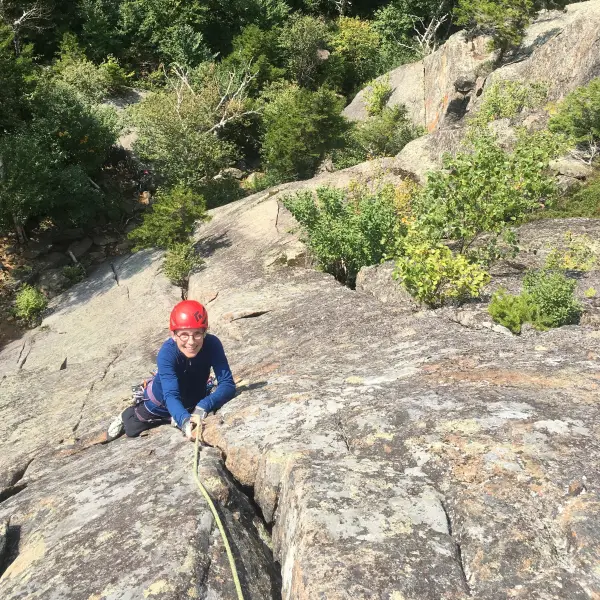Spring
Summer
Fall
Winter
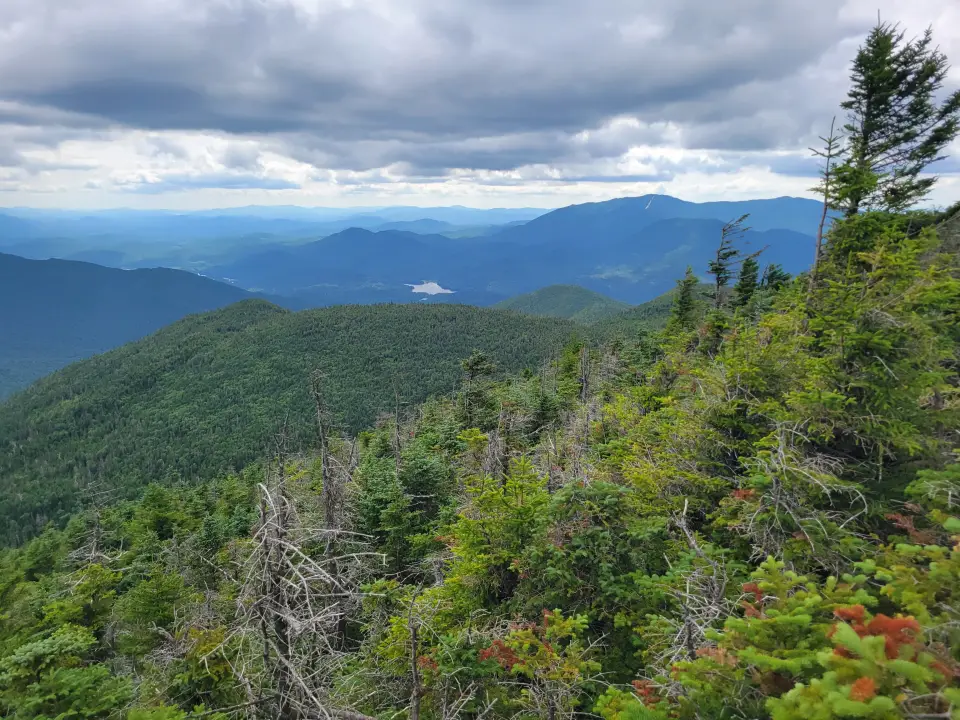
The Adirondack 46 High Peaks
The Adirondack High Peaks have been a magnet for explorers for more than 150 years. The original list of High Peaks included the 46 Adirondack mountains that were higher than 4,000 feet in elevation. Later, it was determined that one mountain had been overlooked and four of the original group were actually a little lower than 4,000 feet.
These days, people seeking the coveted 46er patch must summit the mountains on the original list. Most of the High Peaks are located in the Lake Placid/Keene-Keene Valley area.
Roughly twenty of the High Peaks do not have a marked trail to the top. On those mountains unmaintained, unmarked herd paths have developed over the years. These paths are generally easy to follow, but anyone attempting them should know how to use a map and compass. Hikers are urged to buy a good hiking guidebook or to hire an Adirondack guide. A successful hike of any 46er involves research, physical fitness, the right gear, and knowledge of Leave No Trace principles.
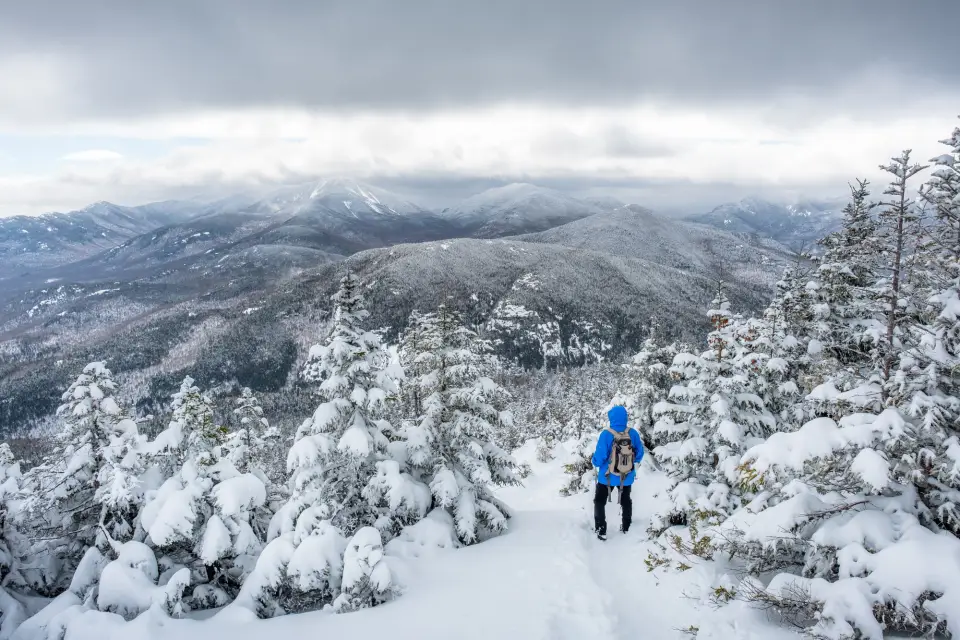
The Adirondack 46 High Peaks
The Adirondack High Peaks have been a magnet for explorers for more than 150 years. The original list of High Peaks included the 46 Adirondack mountains that were higher than 4,000 feet in elevation. Later, it was determined that one mountain had been overlooked and four of the original group were actually a little lower than 4,000 feet.
Roughly twenty of the High Peaks do not have a marked trail to the top. On those mountains unmaintained, unmarked herd paths have developed over the years. These paths are generally easy to follow, but anyone attempting them should know how to use a map and compass. Hikers are urged to buy a good hiking guidebook or to hire an Adirondack guide. A successful hike of any 46er involves research, physical fitness, the right gear, and knowledge of Leave No Trace principles.
All of the 46 High Peaks are challenging in the winter, and should only be attempted by experienced hikers, so make sure you are prepared. Snowshoes and microspikes are necessary, and crampons are needed on many of them as well. Plan on temperatures in the higher elevations being at least 20 degrees colder than at the trailhead, not including the windchill. Bring several extra non-cotton layers, a headlamp with spare batteries, extra food, a windbreaker, goggles, a face mask, and supplies for spending the night in case of an emergency. Water crossings can be especially dangerous during the beginning and end of winter. Always use caution at water crossings, turning around is always an option.

The Adirondack 46 High Peaks
The Adirondack High Peaks have been a magnet for explorers for more than 150 years. The original list of High Peaks included the 46 Adirondack mountains that were higher than 4,000 feet in elevation. Later, it was determined that one mountain had been overlooked and four of the original group were actually a little lower than 4,000 feet.
These days, people seeking the coveted 46er patch must summit the mountains on the original list. Most of the High Peaks are located in the Lake Placid/Keene-Keene Valley area.
Roughly twenty of the High Peaks do not have a marked trail to the top. On those mountains unmaintained, unmarked herd paths have developed over the years. These paths are generally easy to follow, but anyone attempting them should know how to use a map and compass. Hikers are urged to buy a good hiking guidebook or to hire an Adirondack guide. A successful hike of any 46er involves research, physical fitness, the right gear, and knowledge of Leave No Trace principles.

Spring in the High Peaks
Spring hiking in the High Peaks means variable conditions. With snow melting, trails become muddy, water-crossings become high and hazardous, and rotten snow persists on the trail and up high. Taking these factors into consideration, along with ever-changing weather conditions, it is best to stay below 4,000 feet during the spring as the trails harden up.
If you decide to go, be sure to stick to the trail and walk straight through mud. When above treeline, do the rock walk and stay off the rare plants that are present in our alpine ecosystems.
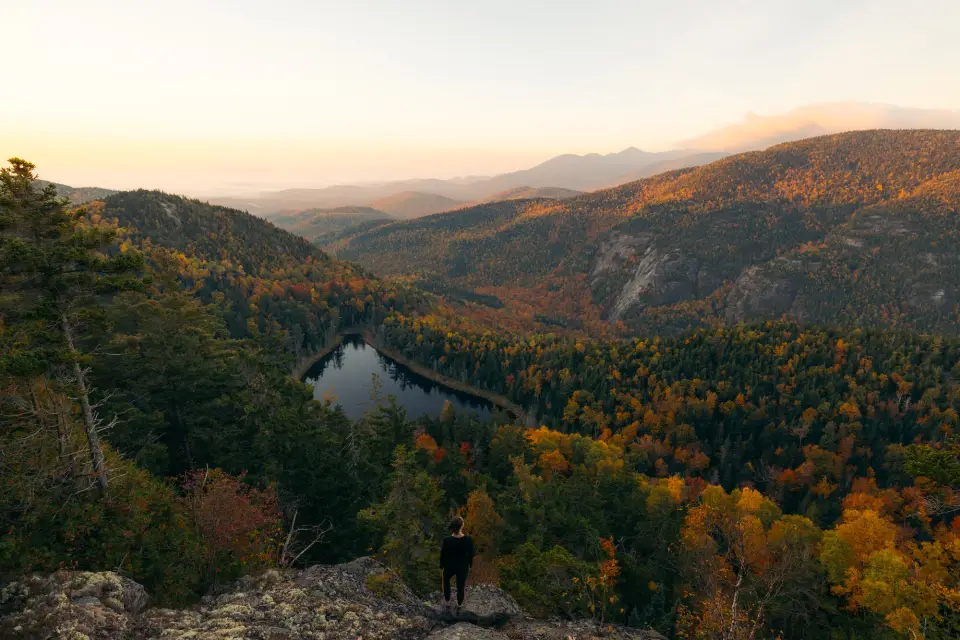
The Adirondack 46 High Peaks
The Adirondack High Peaks have been a magnet for explorers for more than 150 years. The original list of High Peaks included the 46 Adirondack mountains that were higher than 4,000 feet in elevation. Later, it was determined that one mountain had been overlooked and four of the original group were actually a little lower than 4,000 feet.
These days, people seeking the coveted 46er patch must summit the mountains on the original list. Most of the High Peaks are located in the Lake Placid/Keene-Keene Valley area.
Roughly twenty of the High Peaks do not have a marked trail to the top. On those mountains unmaintained, unmarked herd paths have developed over the years. These paths are generally easy to follow, but anyone attempting them should know how to use a map and compass. Hikers are urged to buy a good hiking guidebook or to hire an Adirondack guide. A successful hike of any 46er involves research, physical fitness, the right gear, and knowledge of Leave No Trace principles.
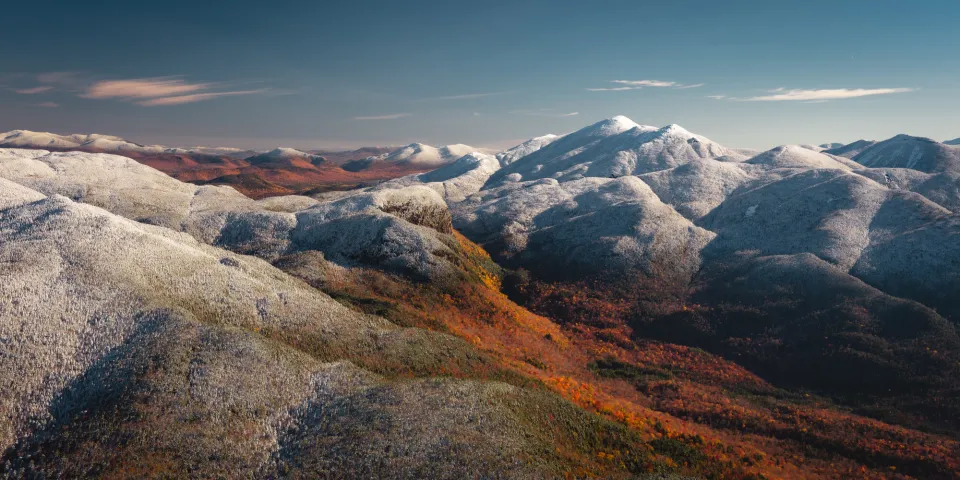
Fall in the High Peaks
Autumn in the High Peaks can be magical. With the colors changing, the mountains switch from shades of green, to all sorts of oranges, purples, yellows, and reds.
And with the change in scenery comes a change in weather. With winter fast approaching, planning ahead and preparing for all conditions becomes paramount. The weather may look good from below, with no snow and warm conditions, but up in the High Peaks, snow could be falling and wind could be whipping. Visit the ADK High Peaks Information Center or the Cascade Welcome Center how you can better prepare for the conditions.

How to hike in the Adk

Outdoor Ethics
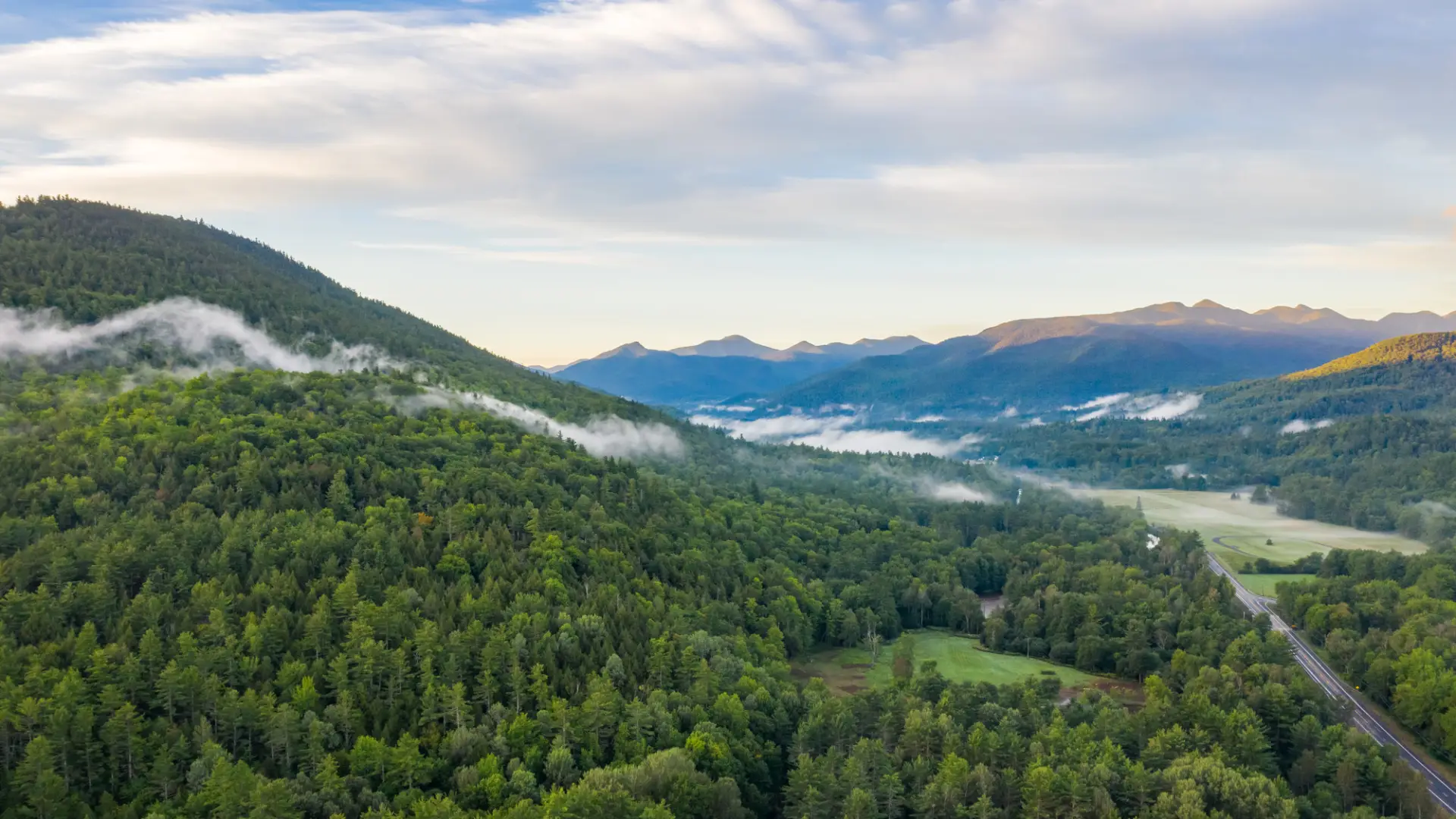
Outdoor Ethics
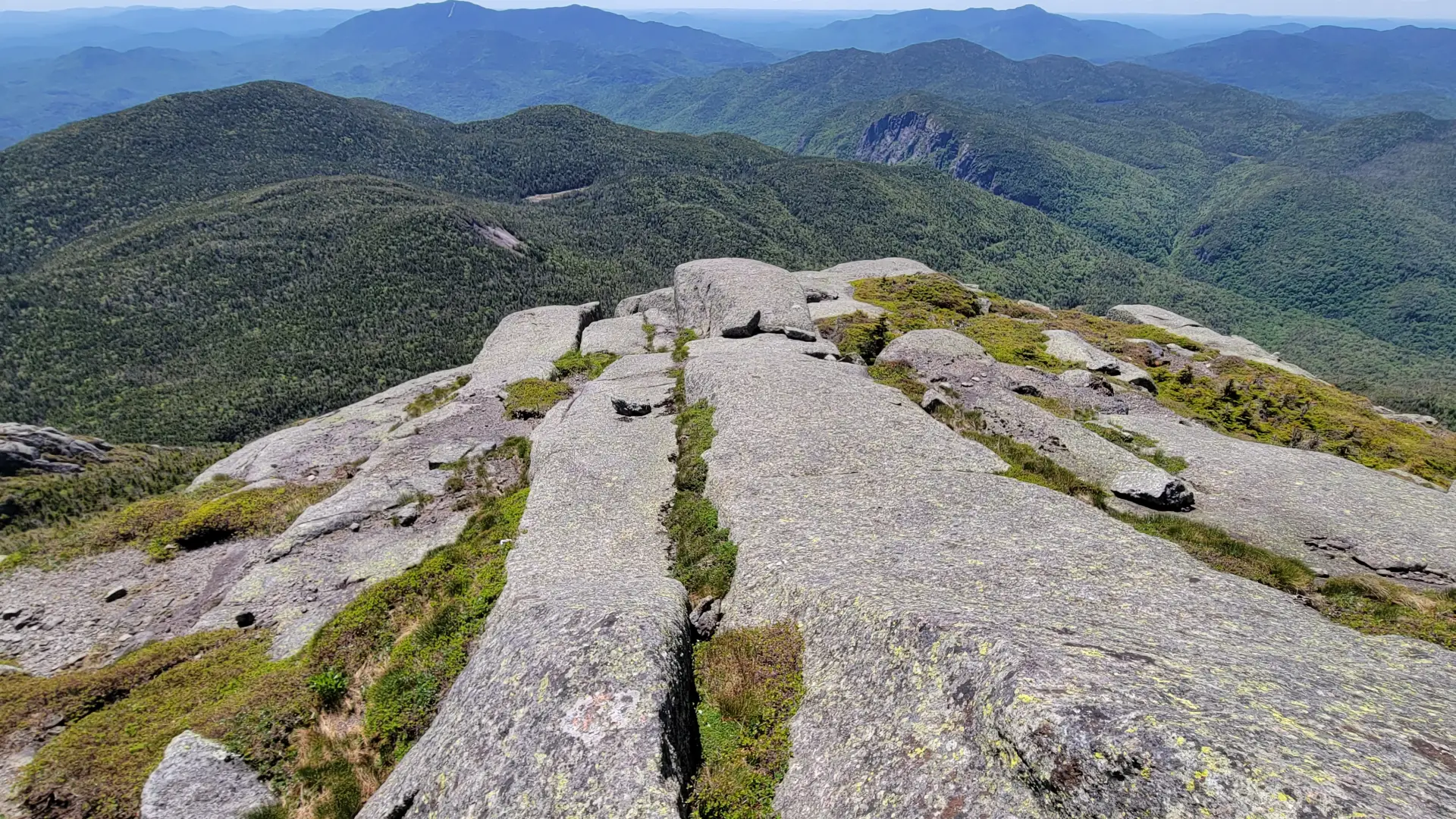
Outdoor Ethics



